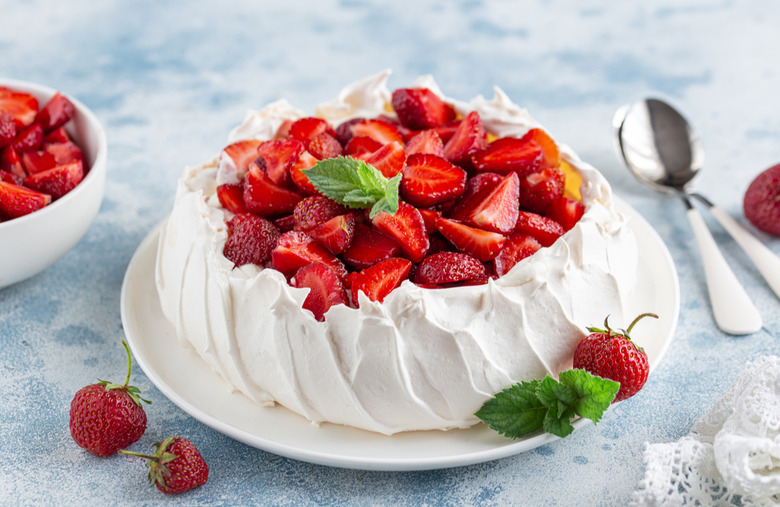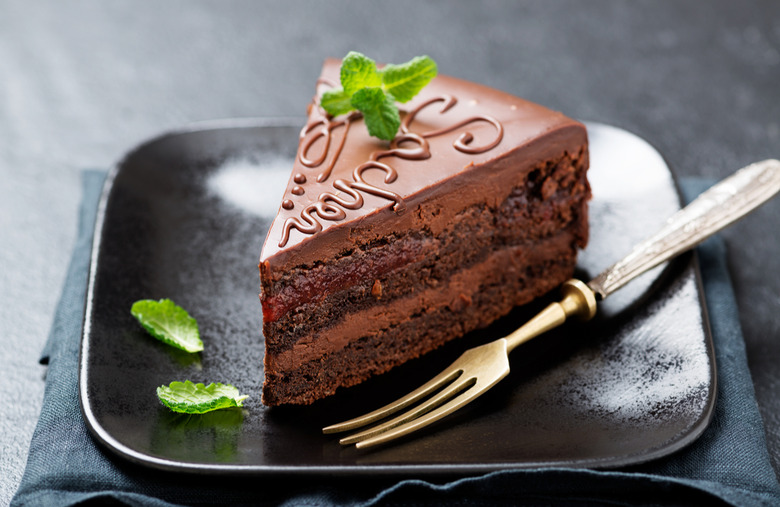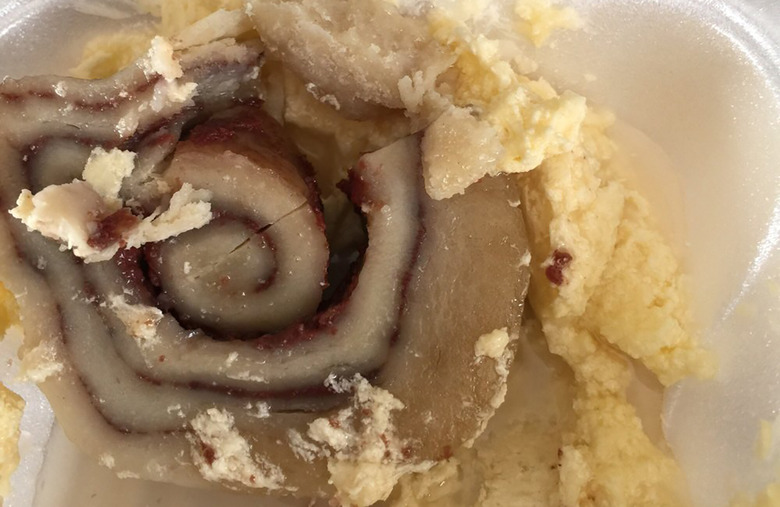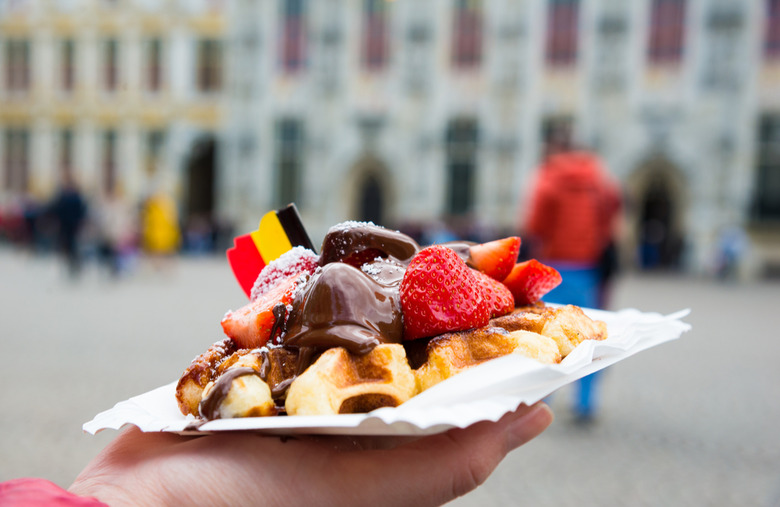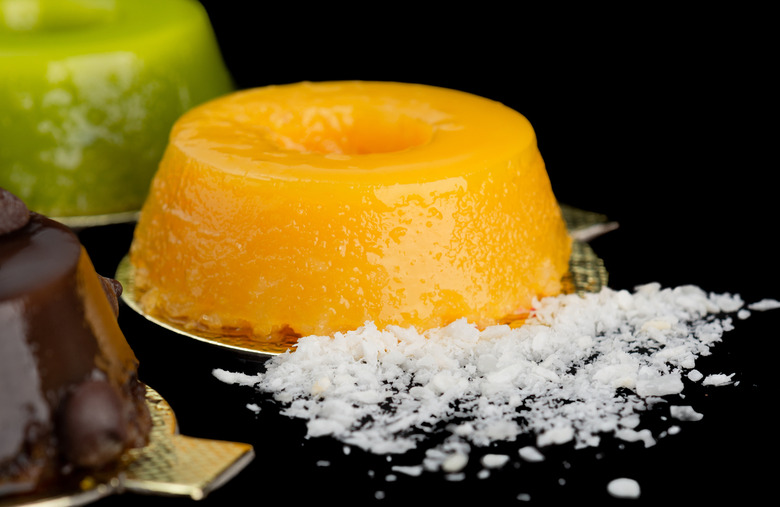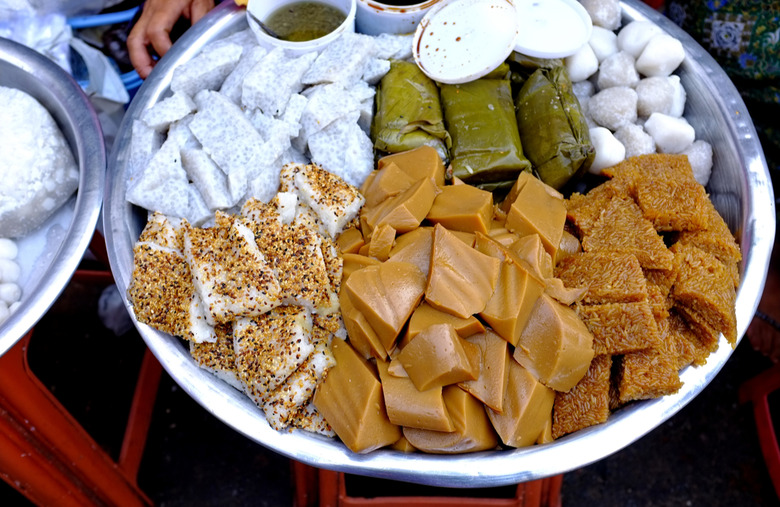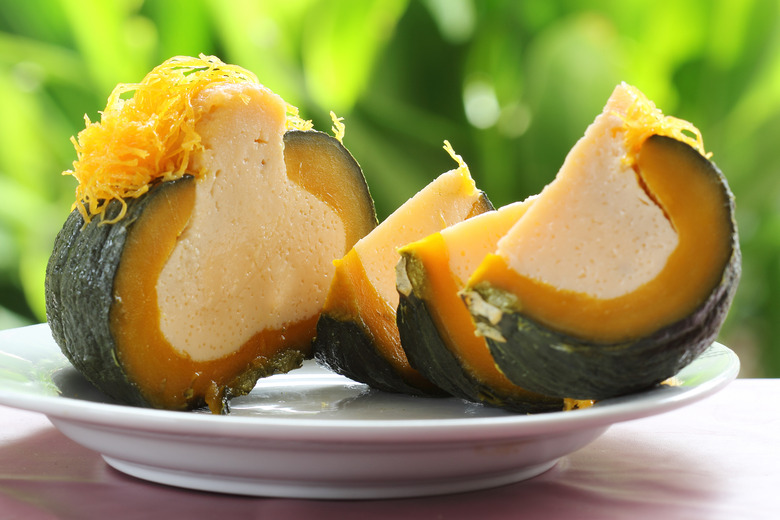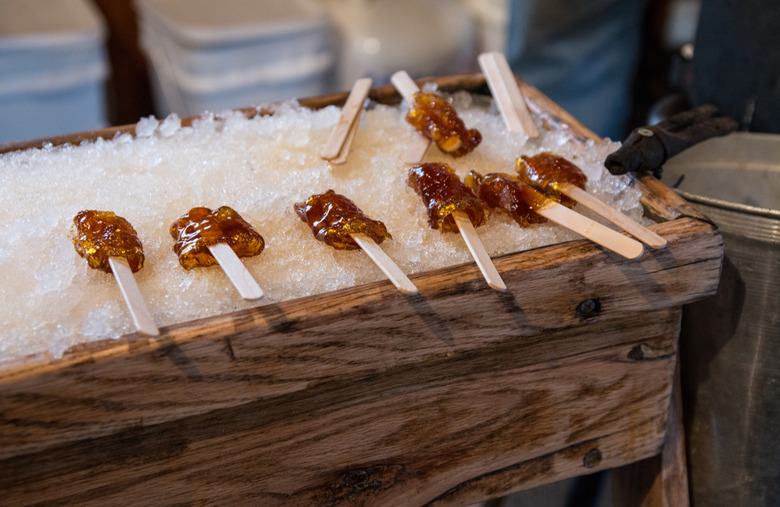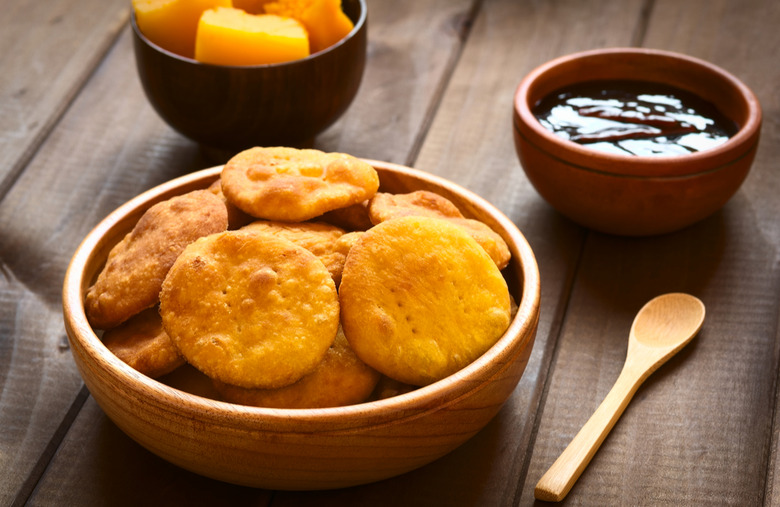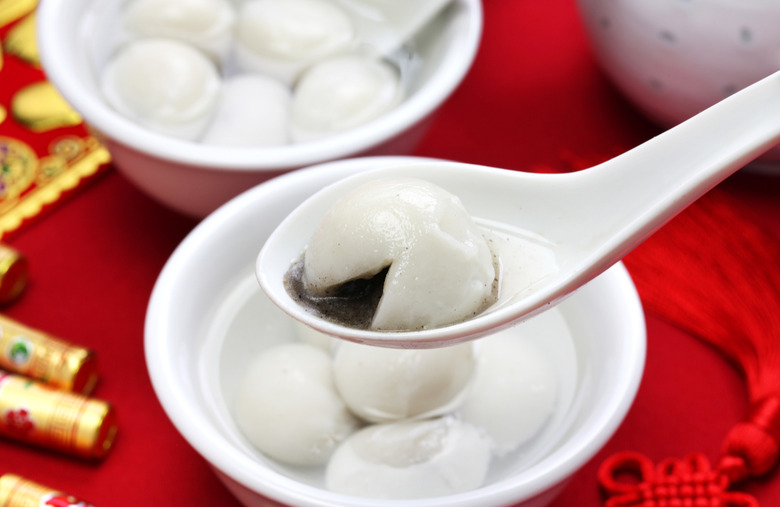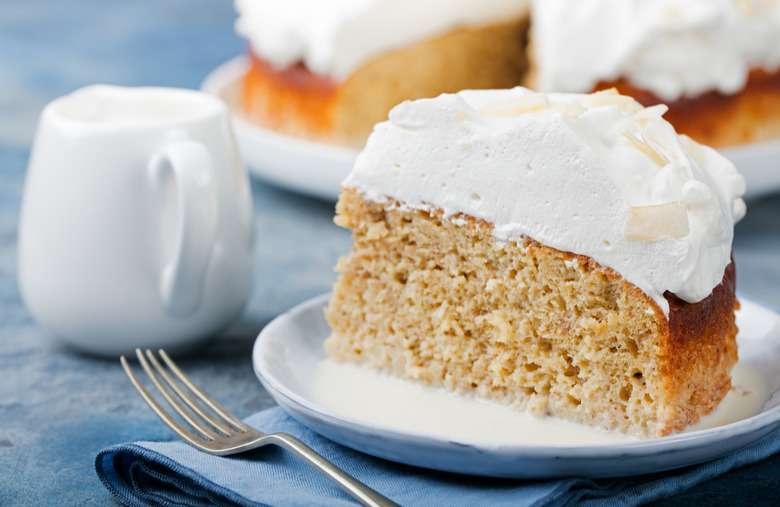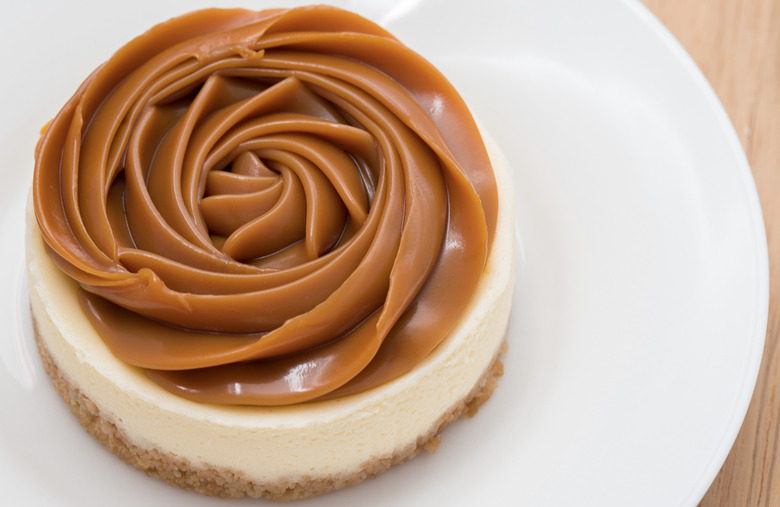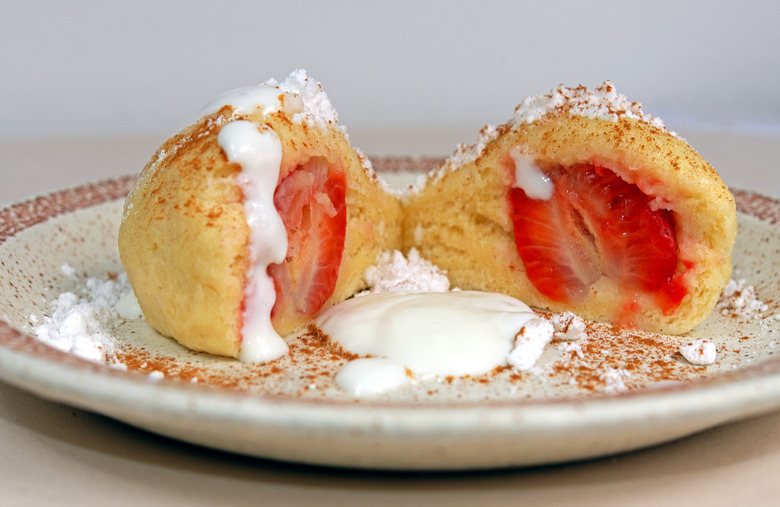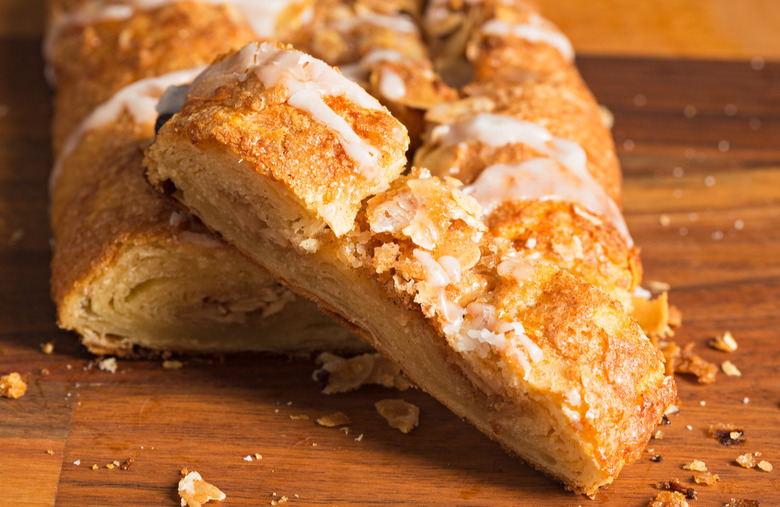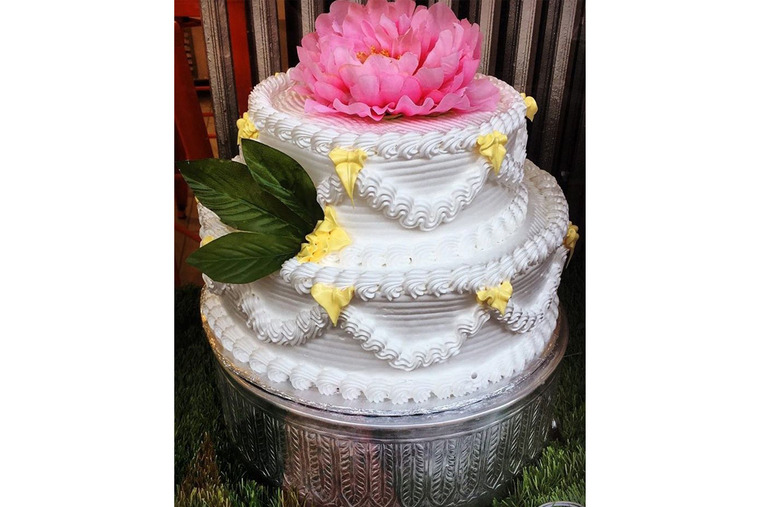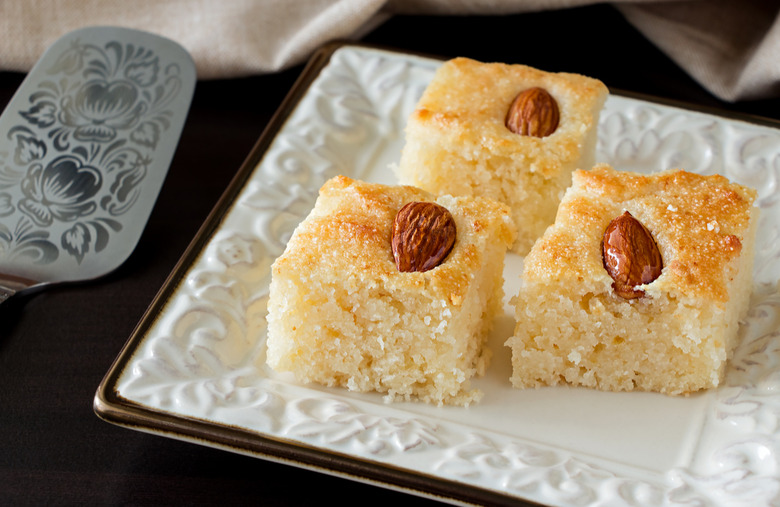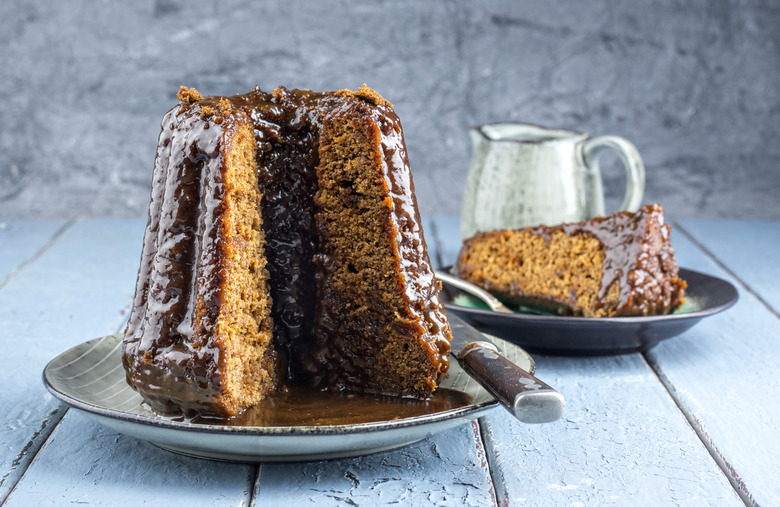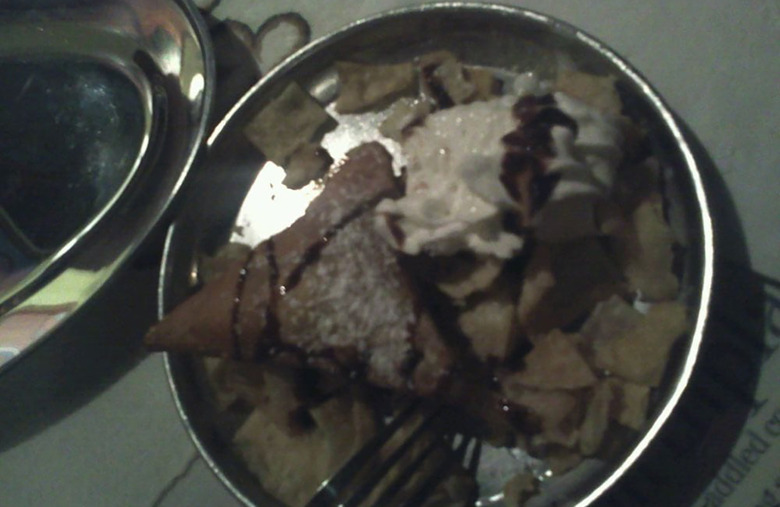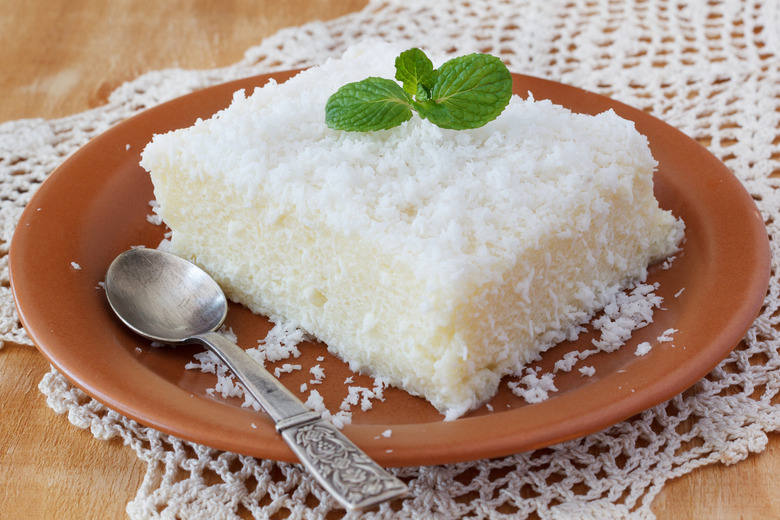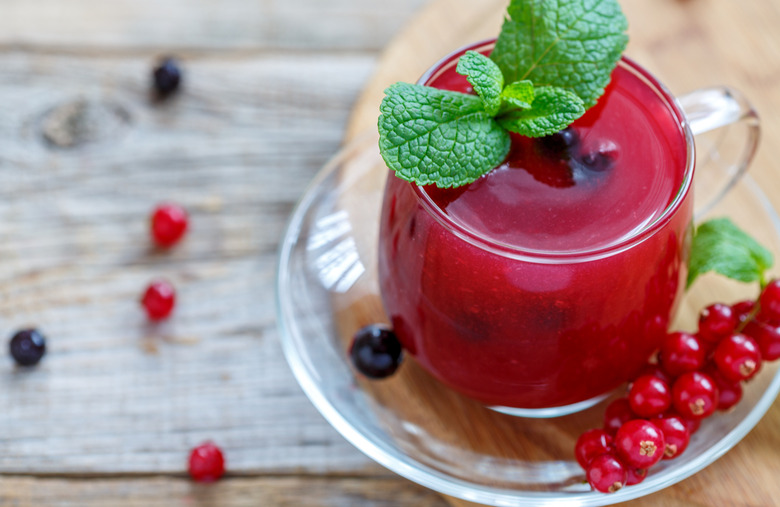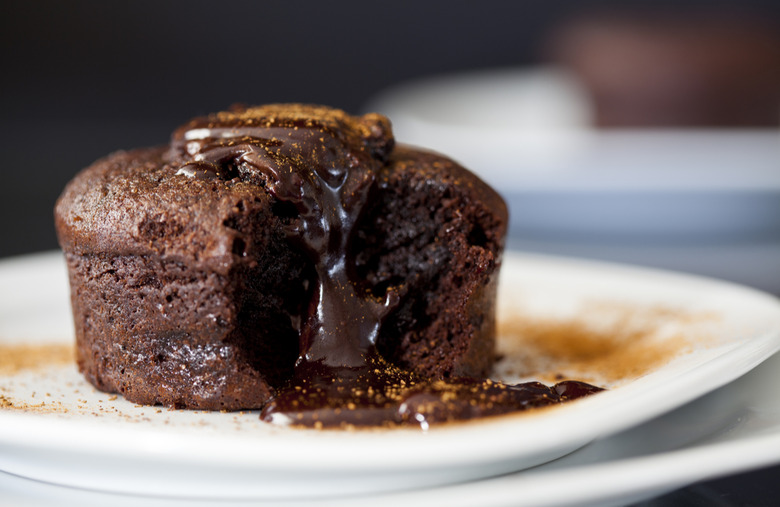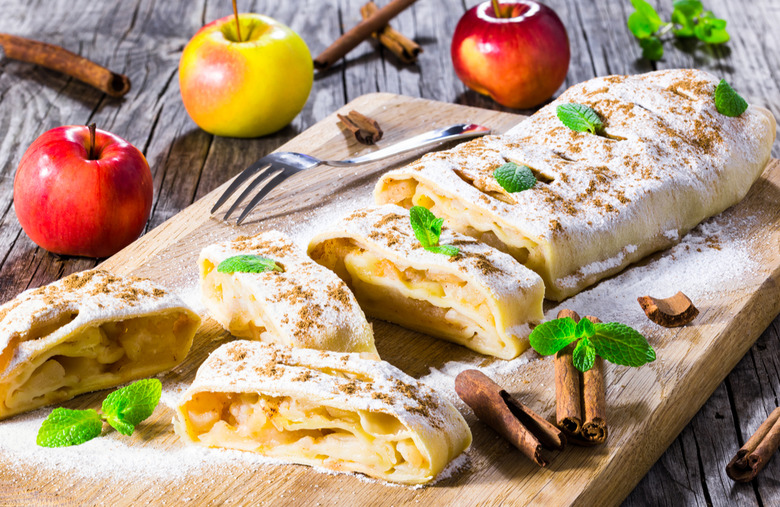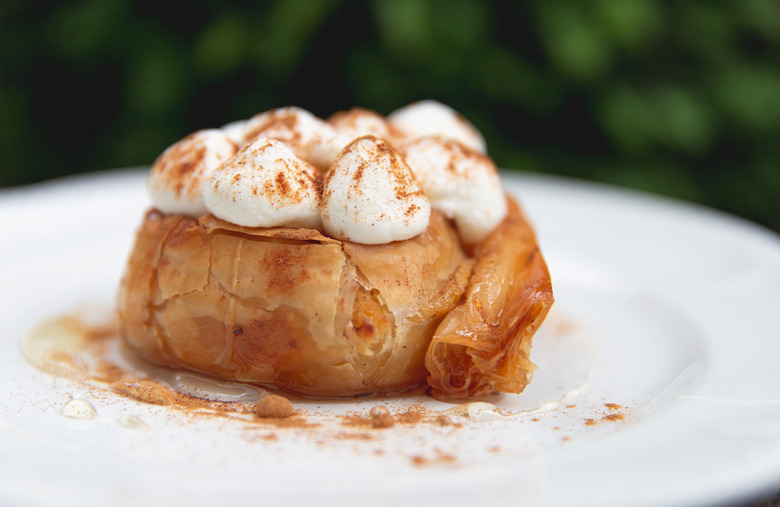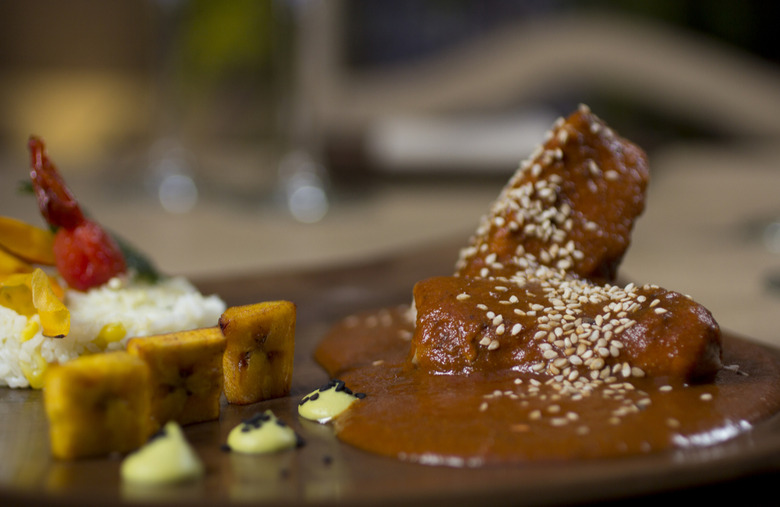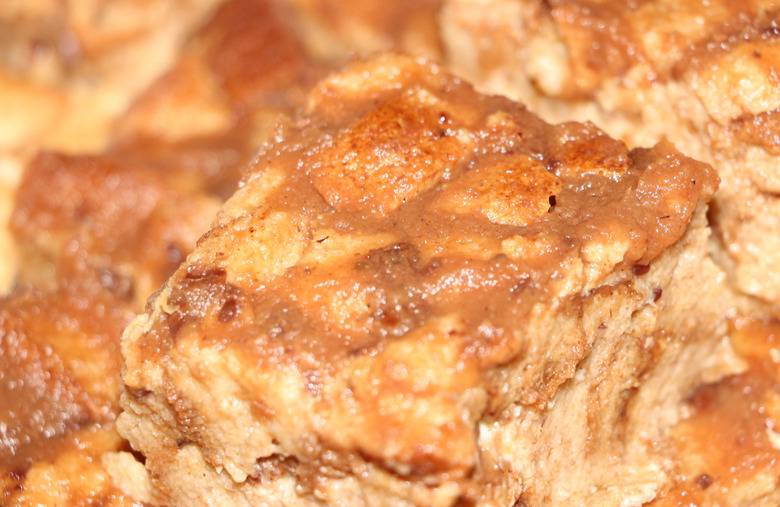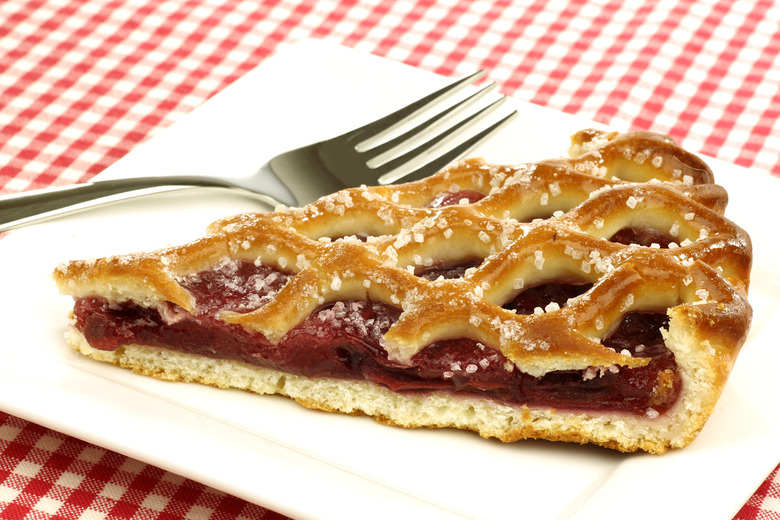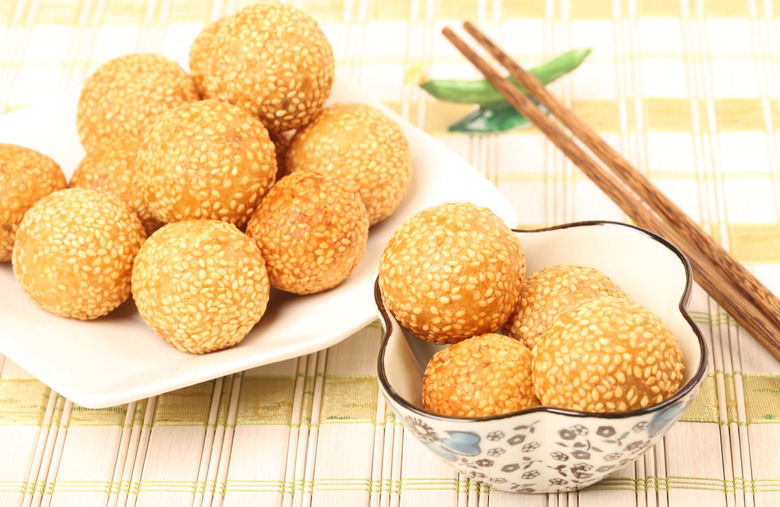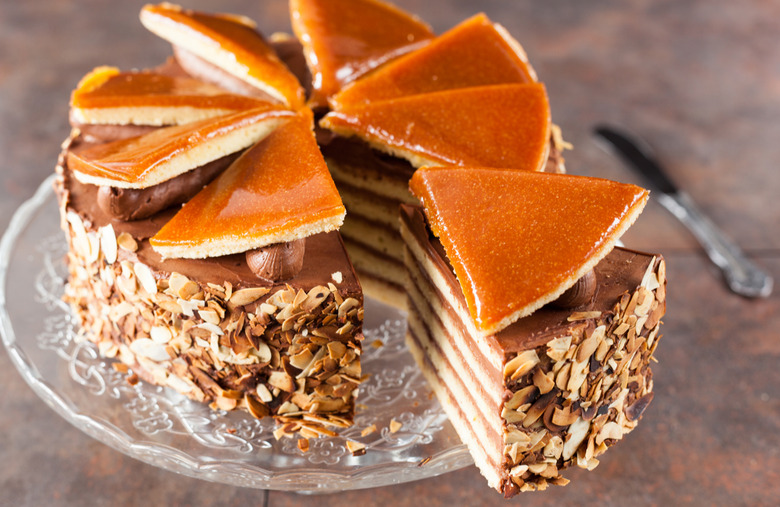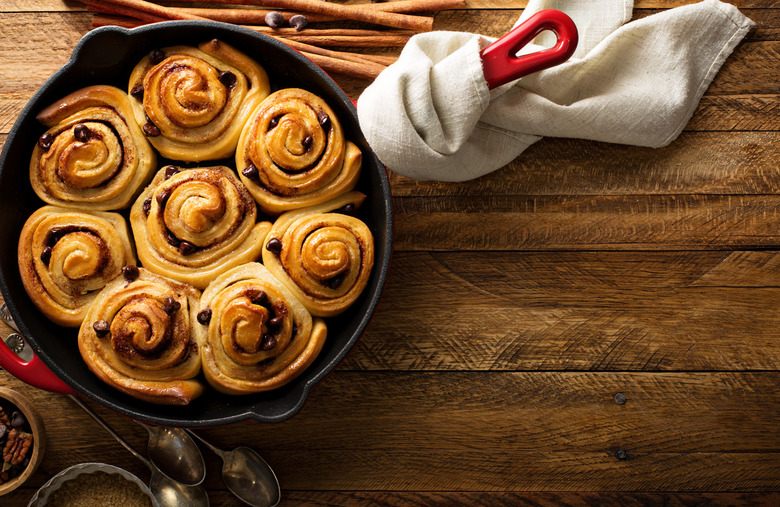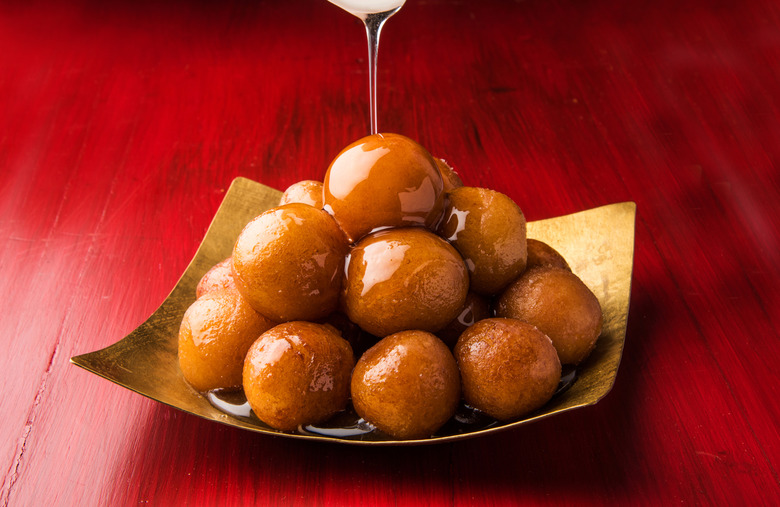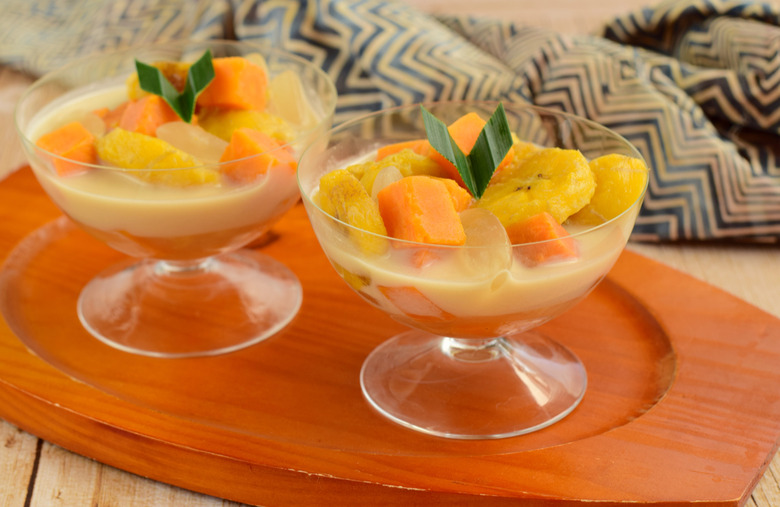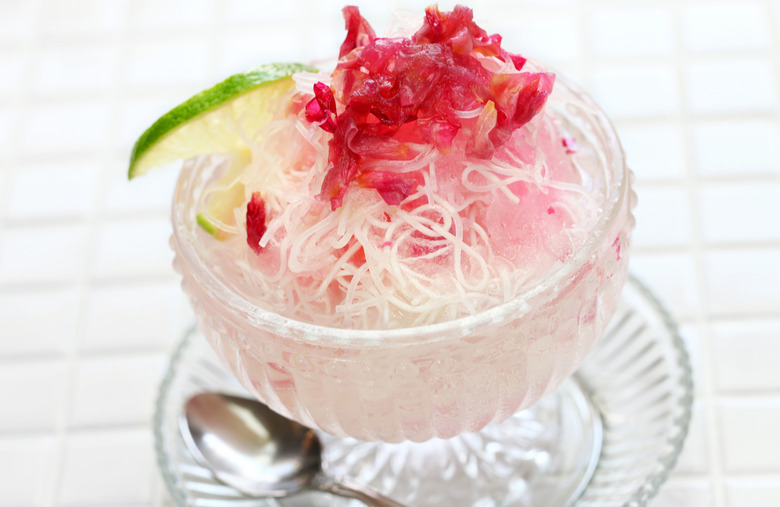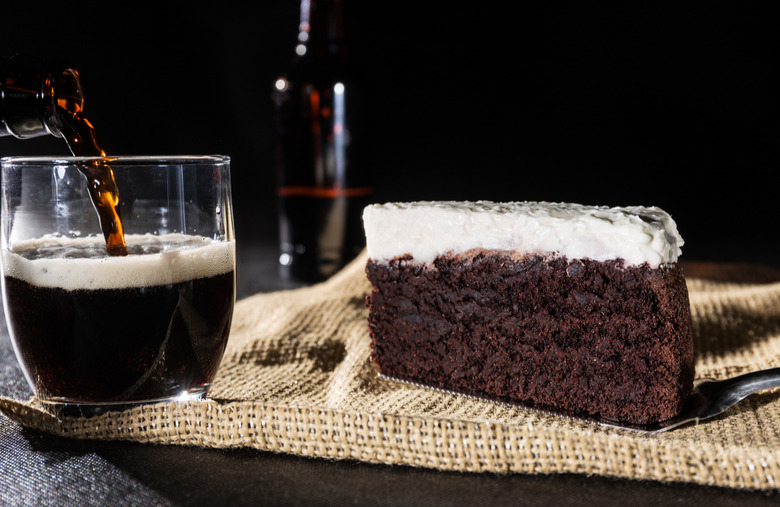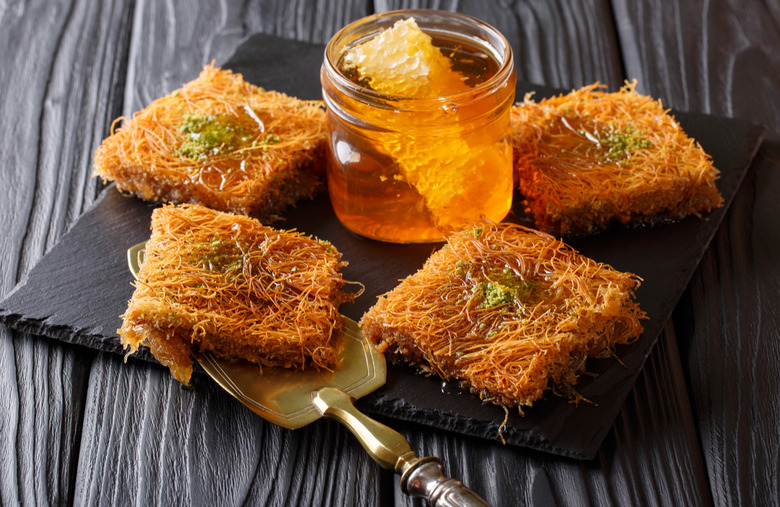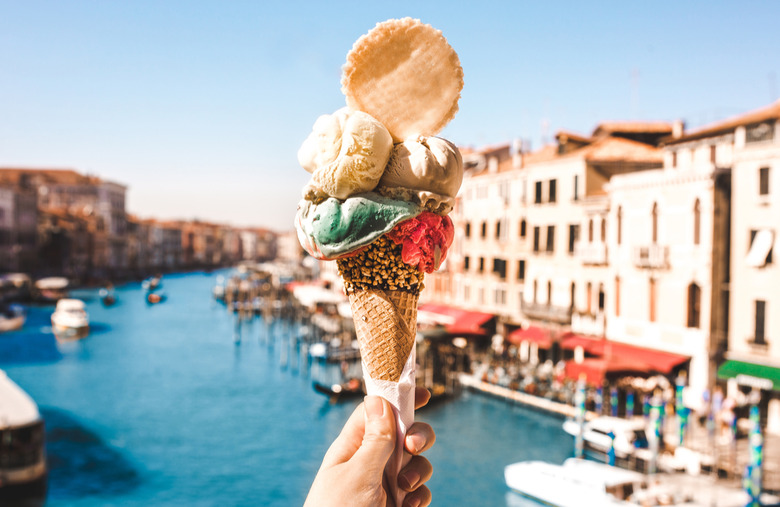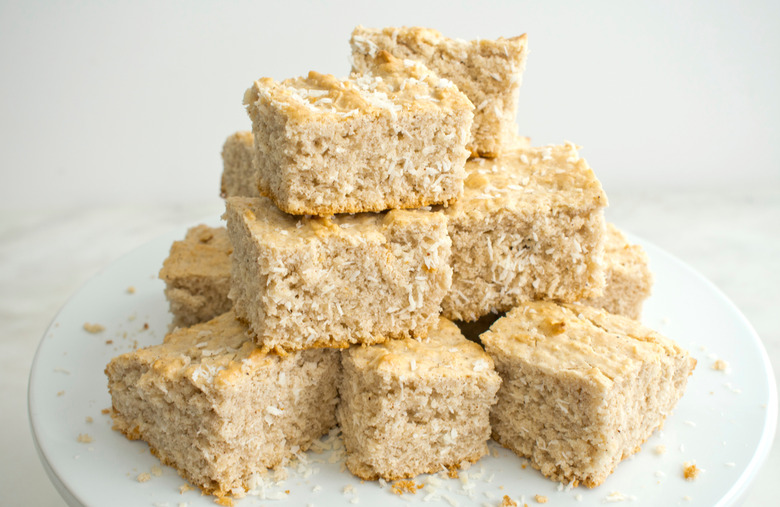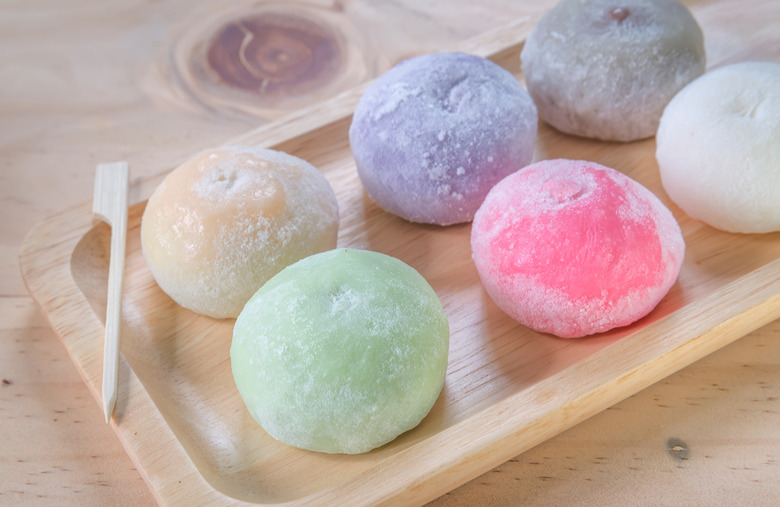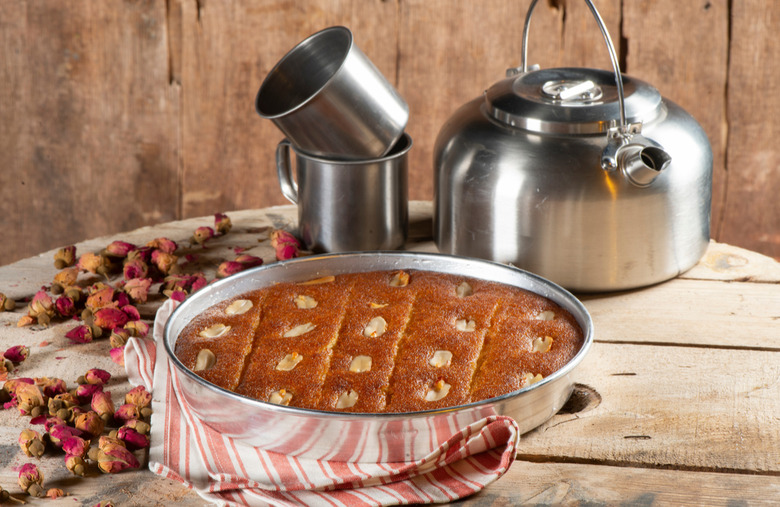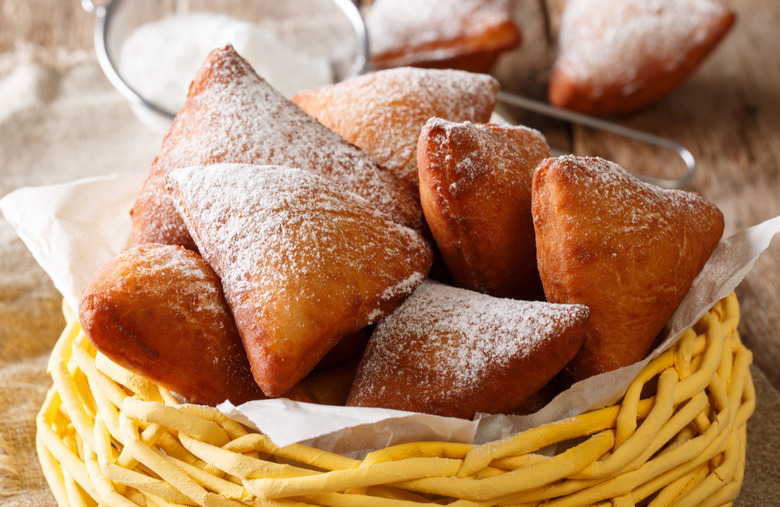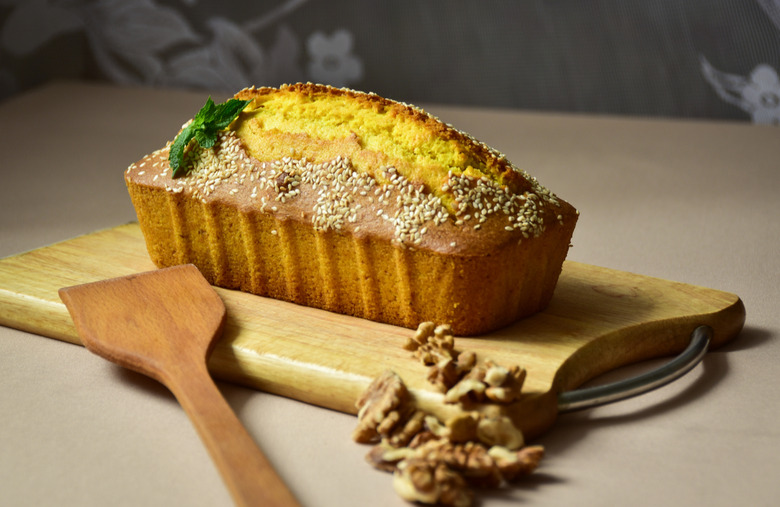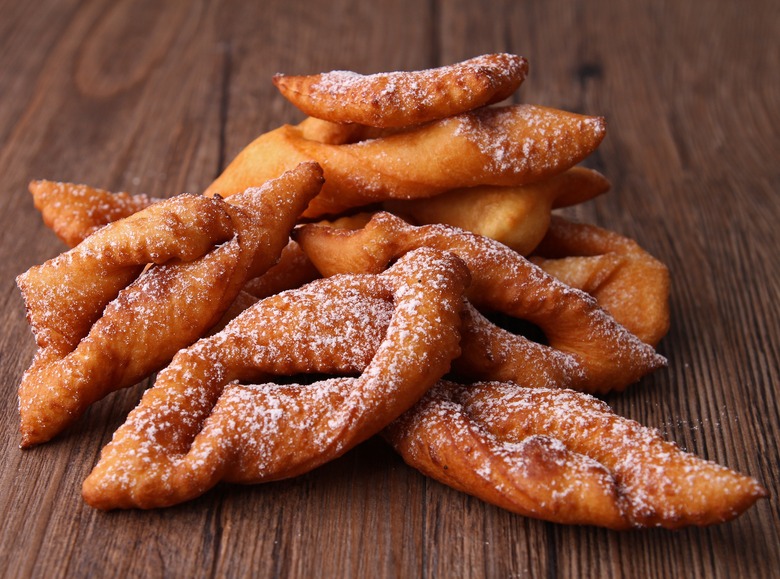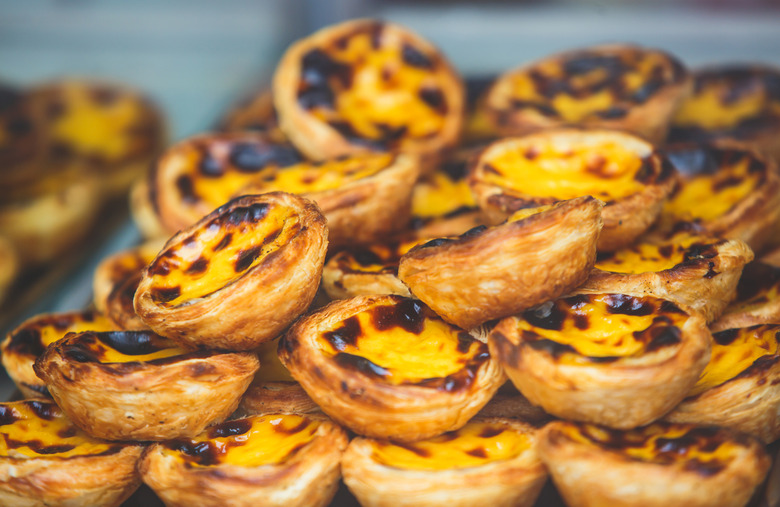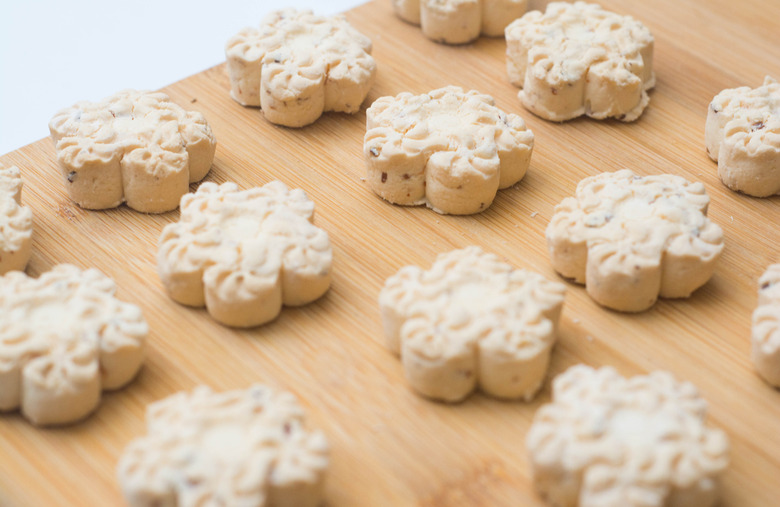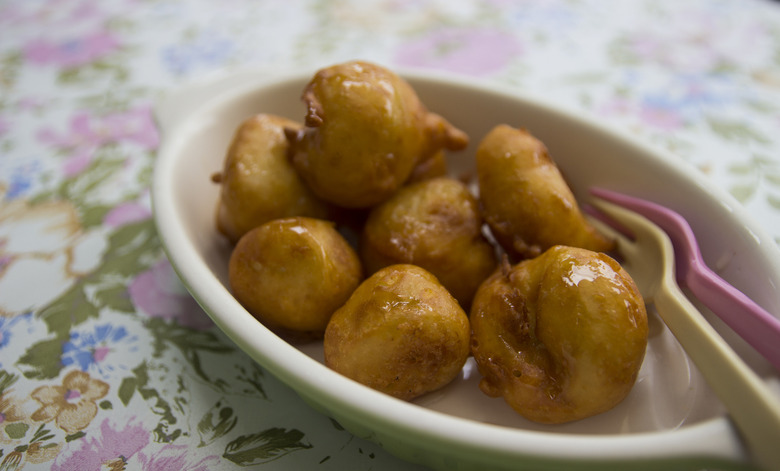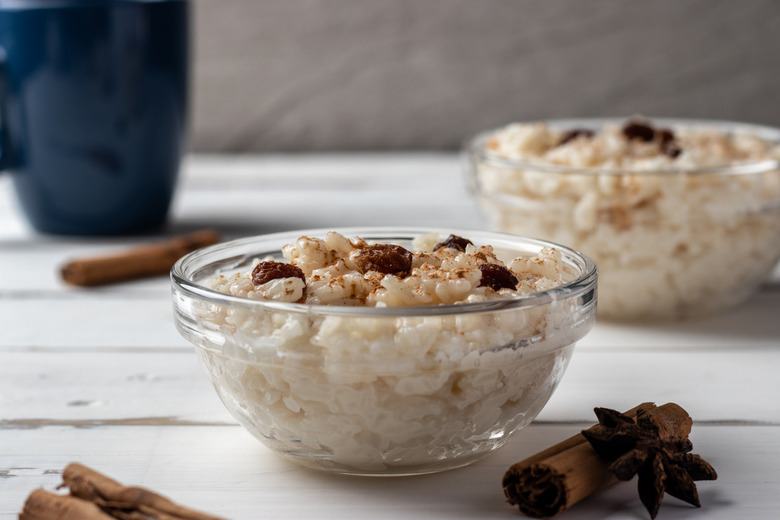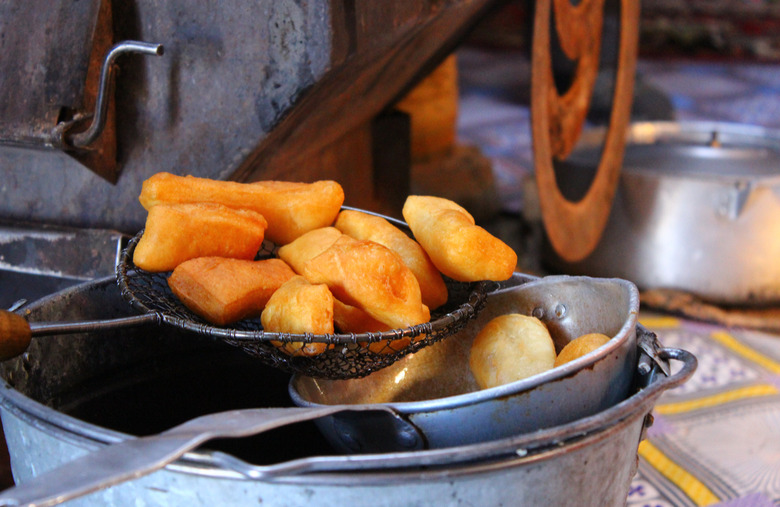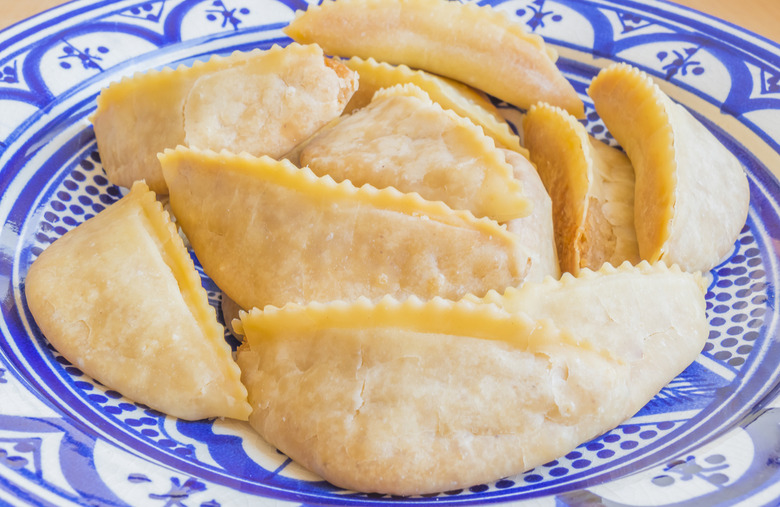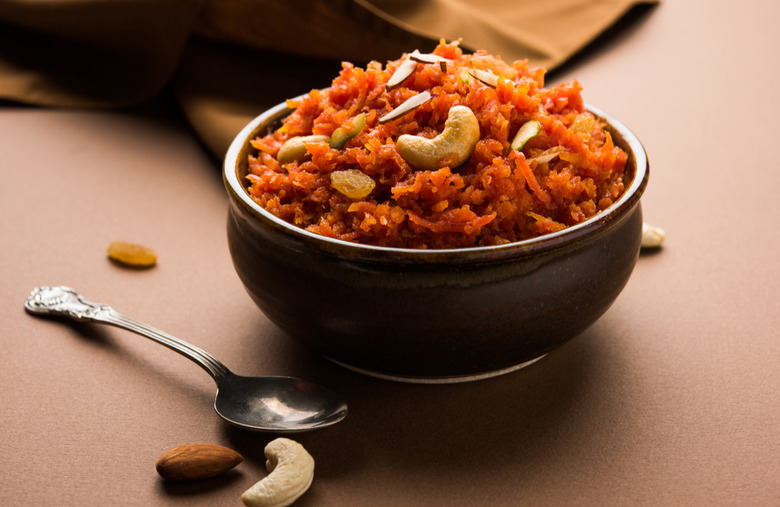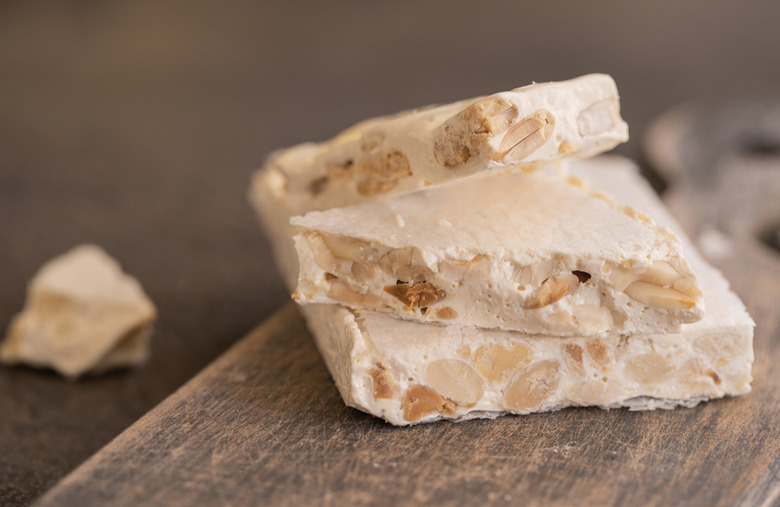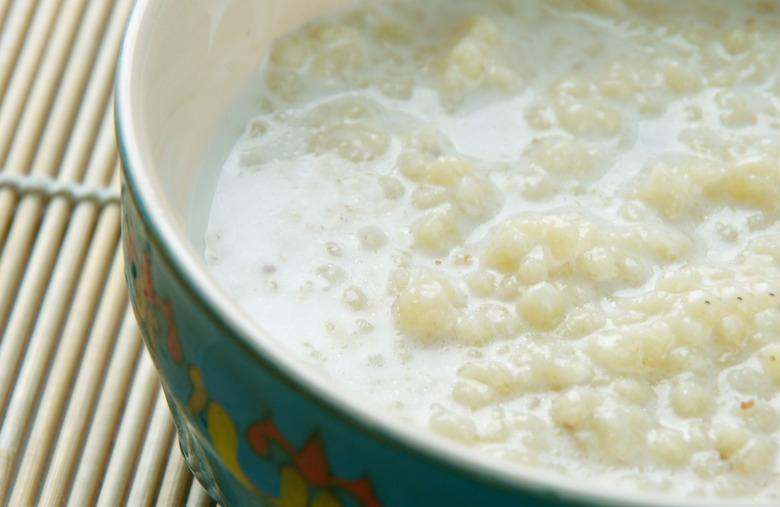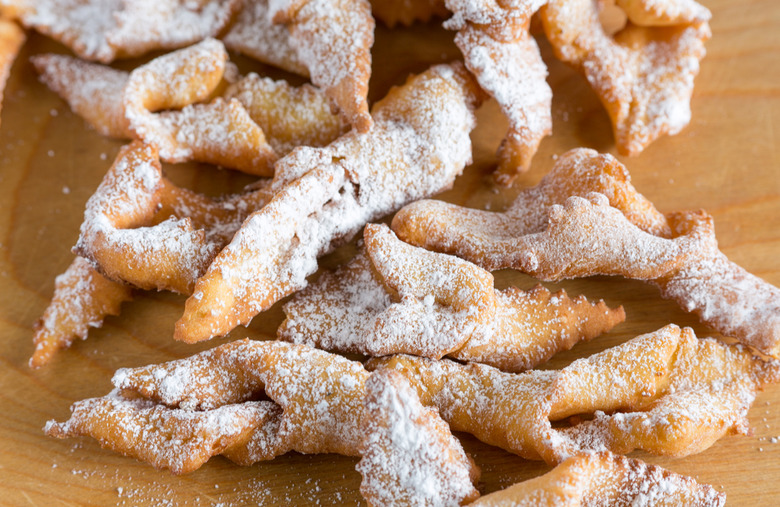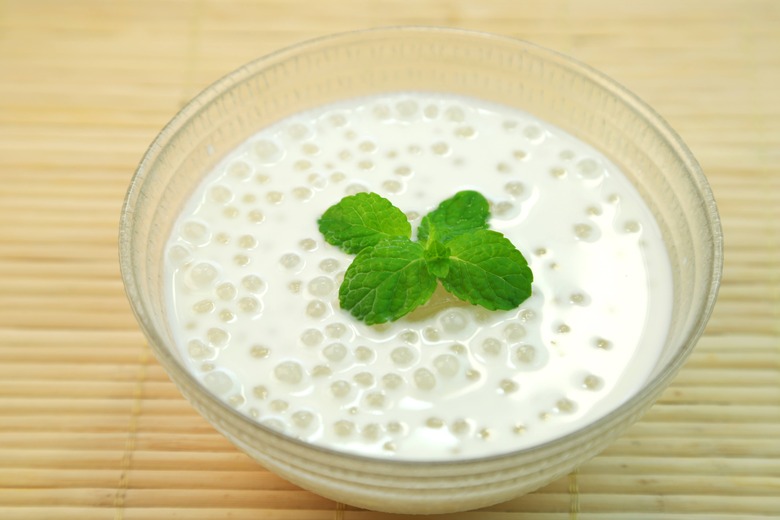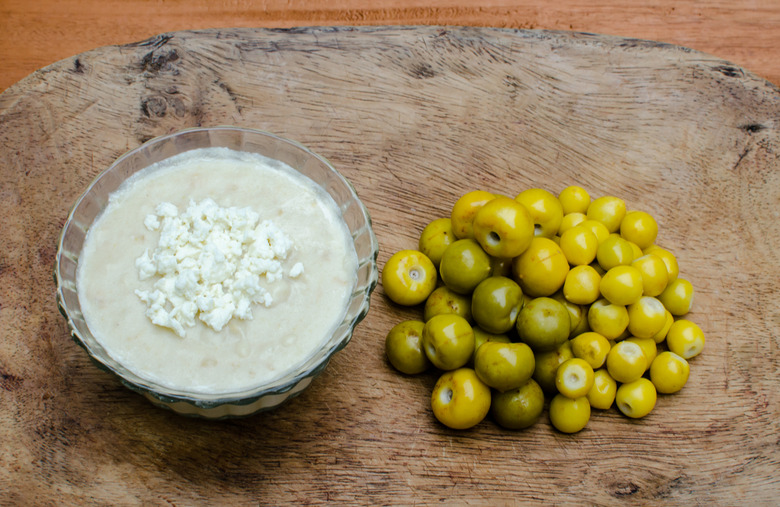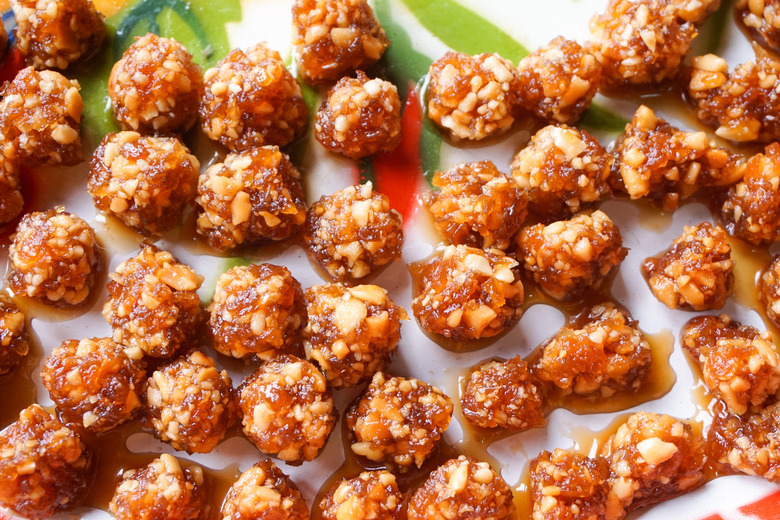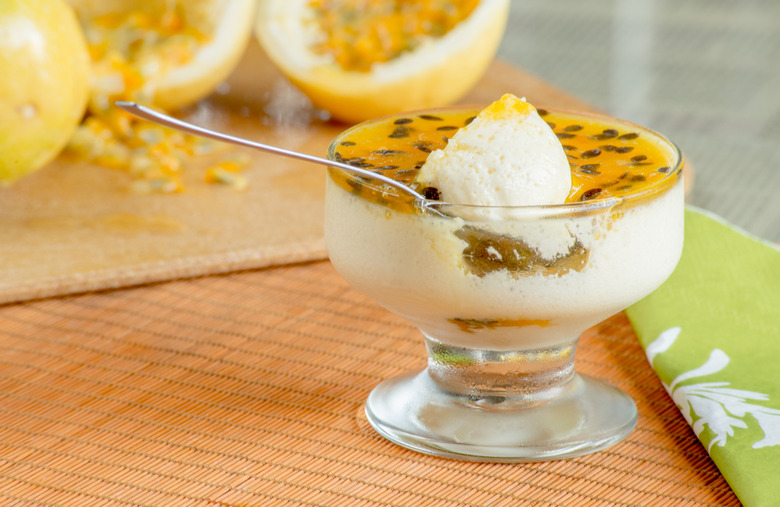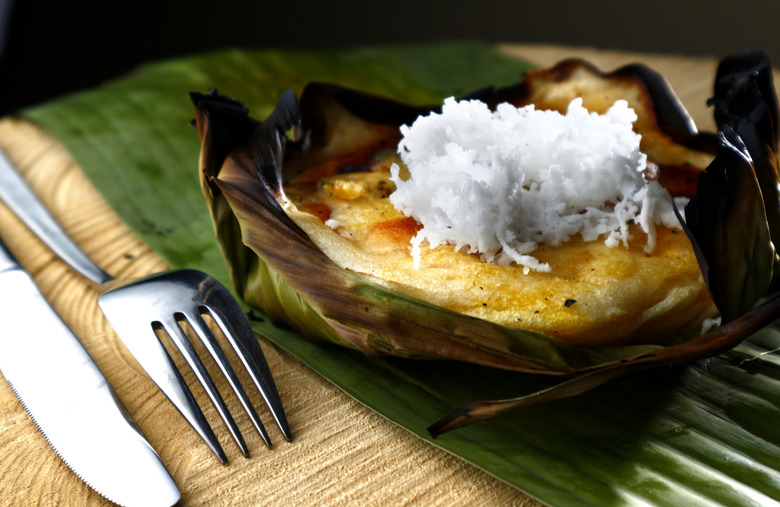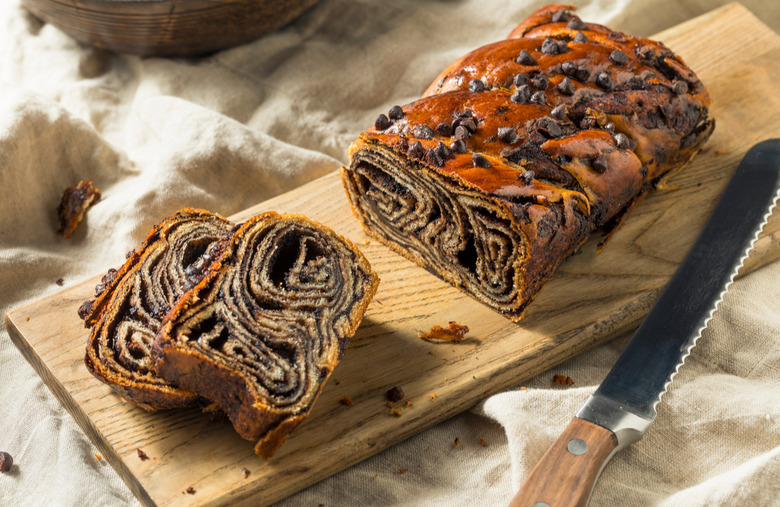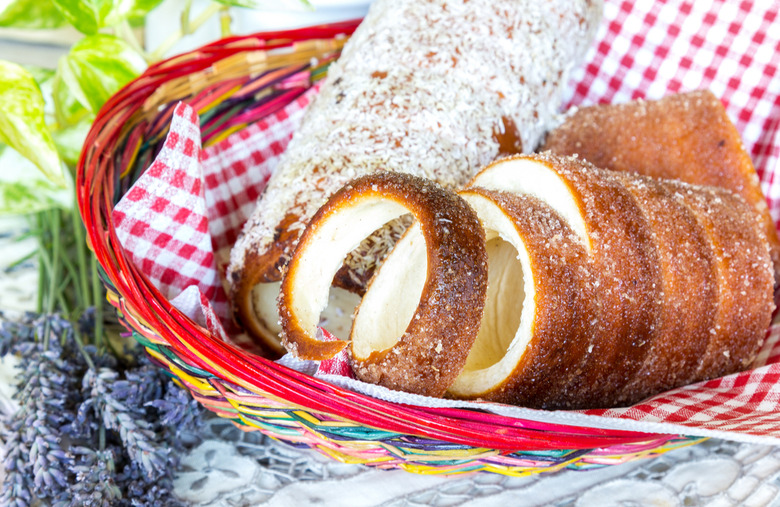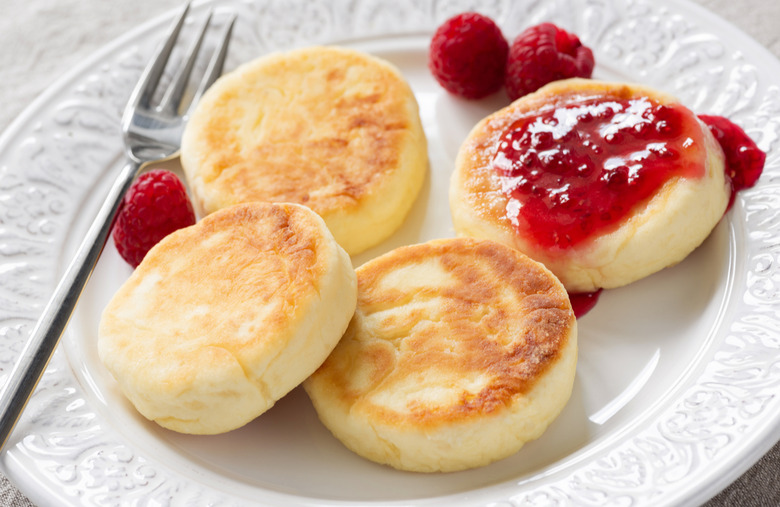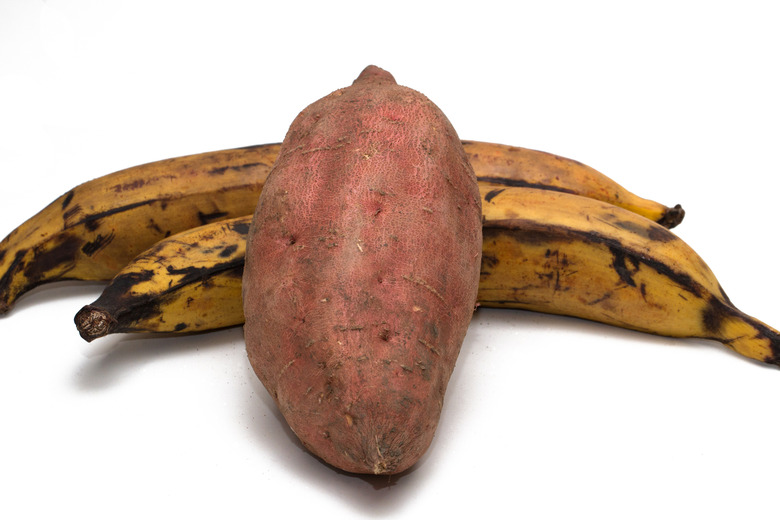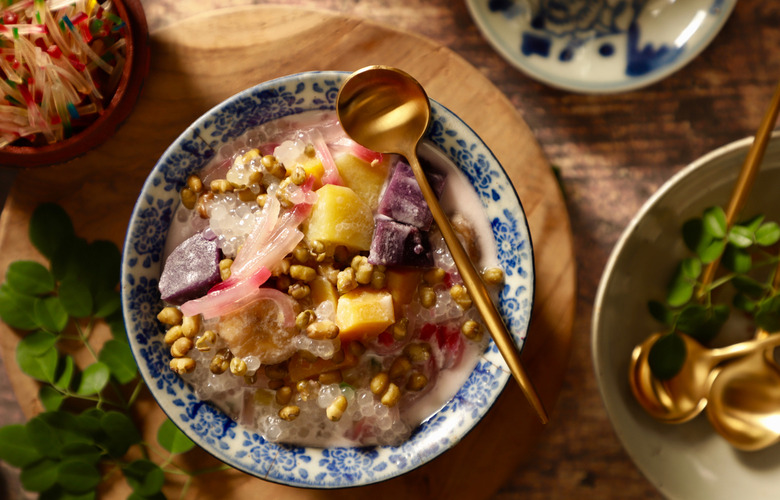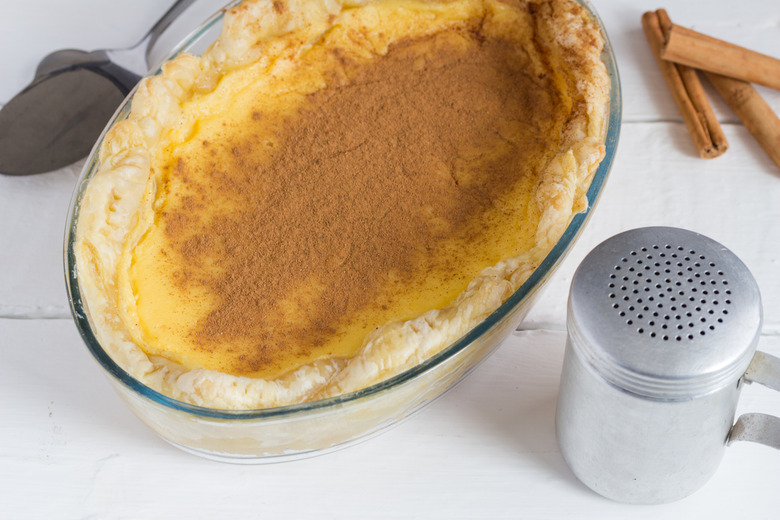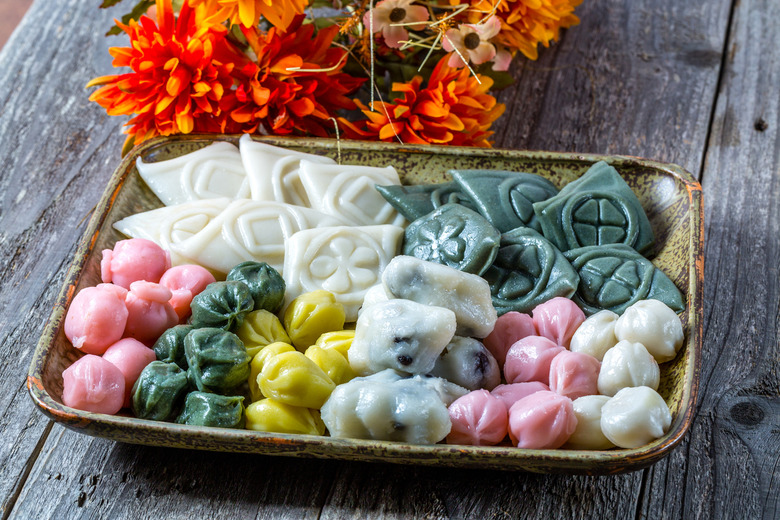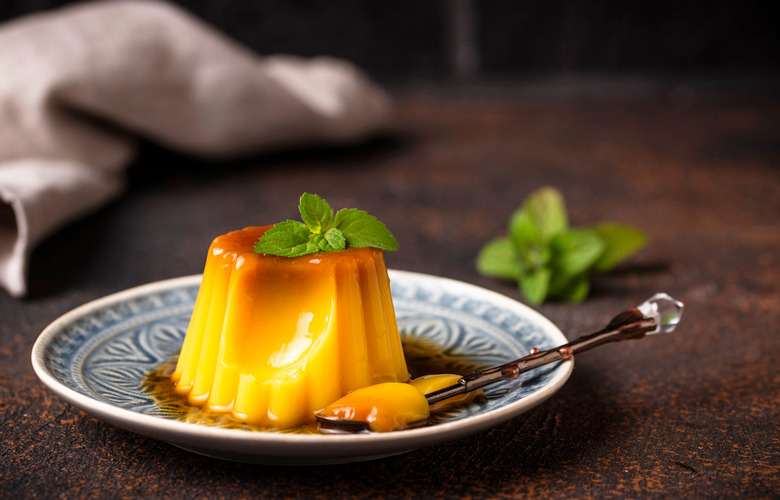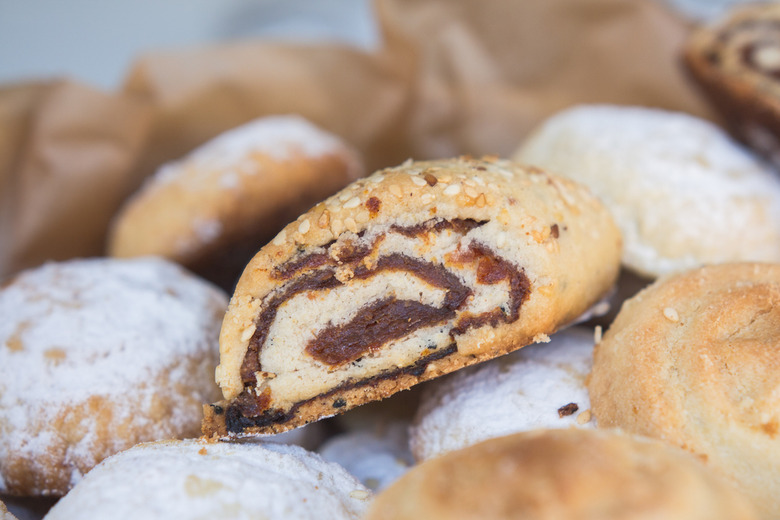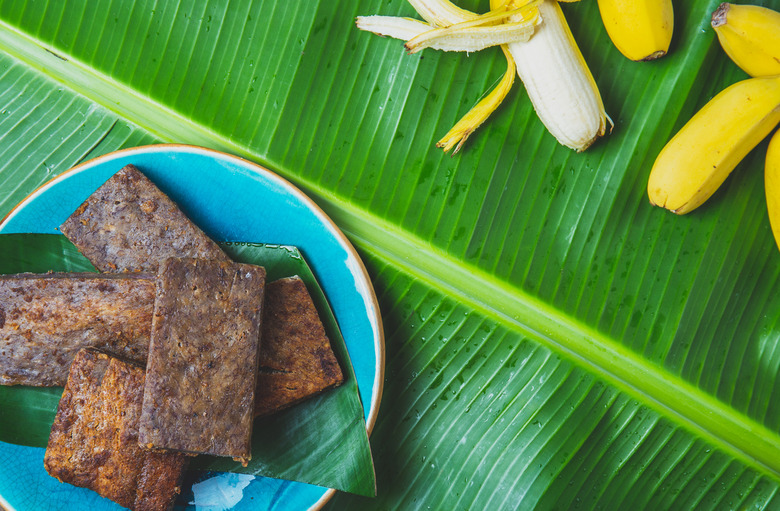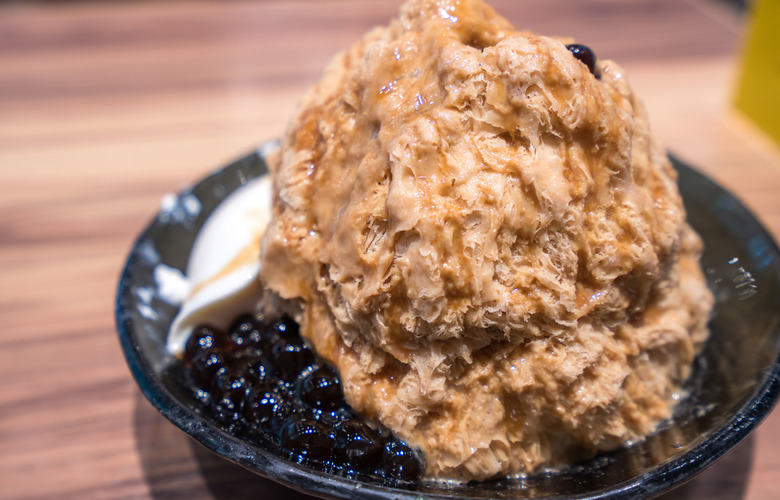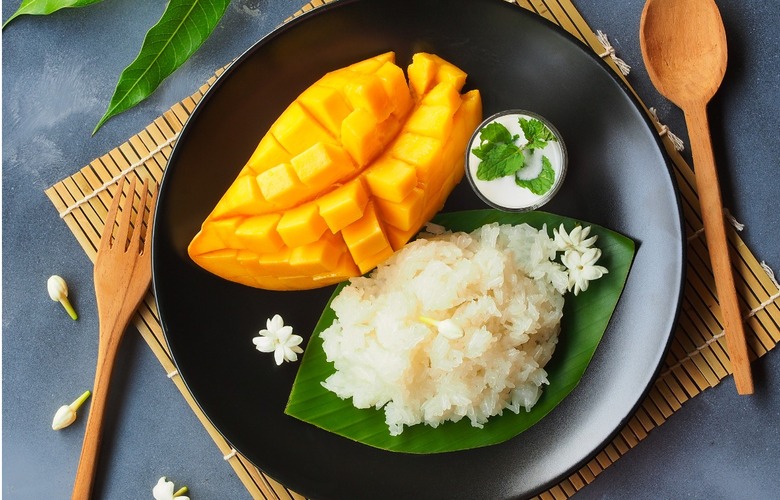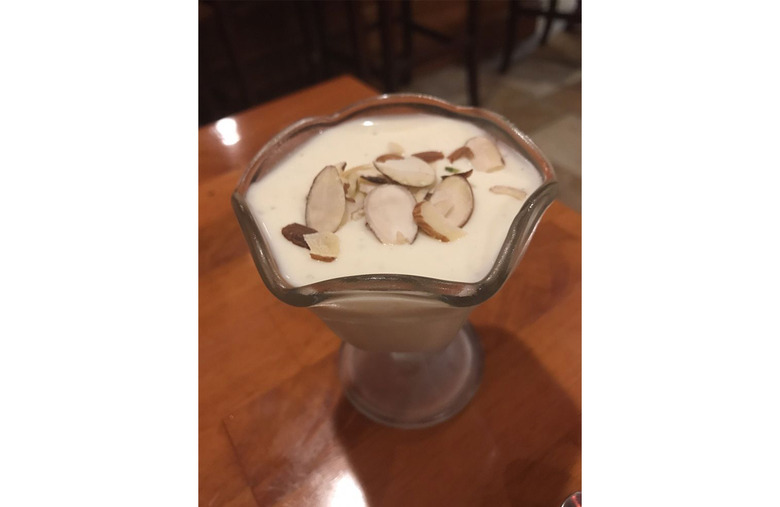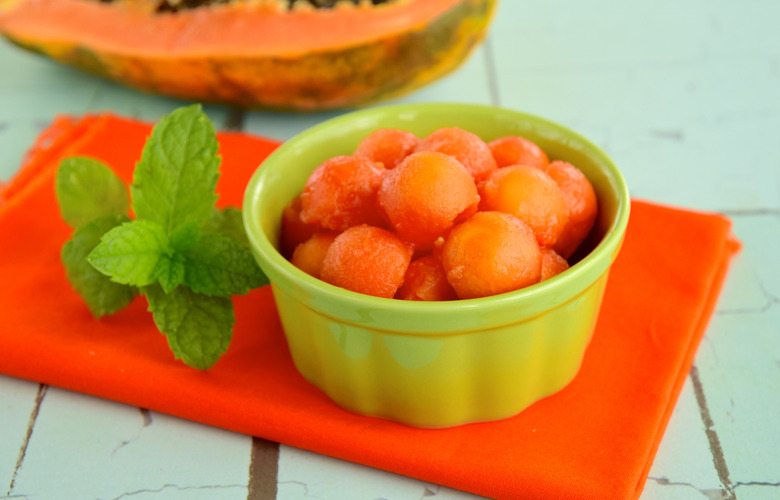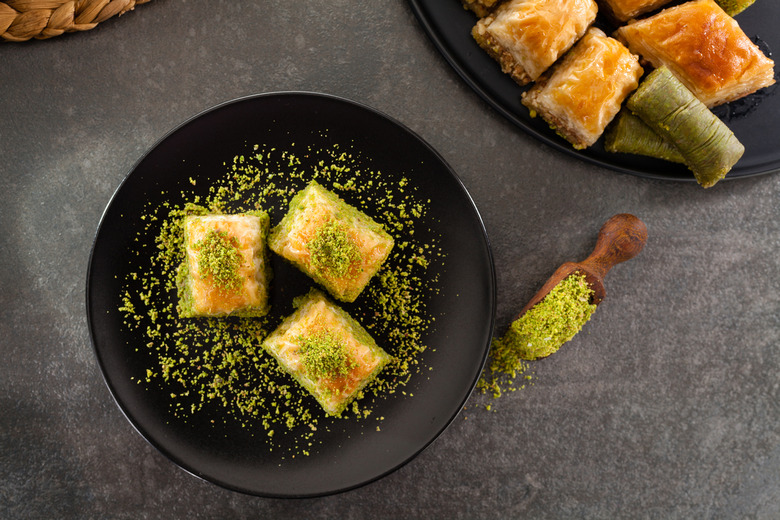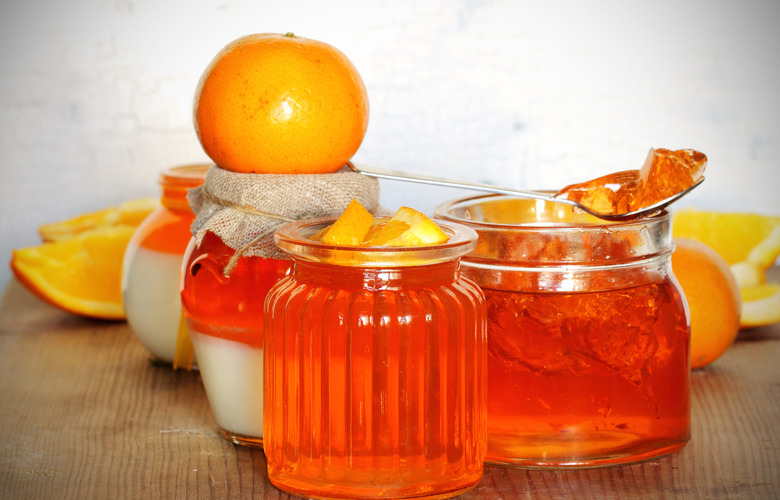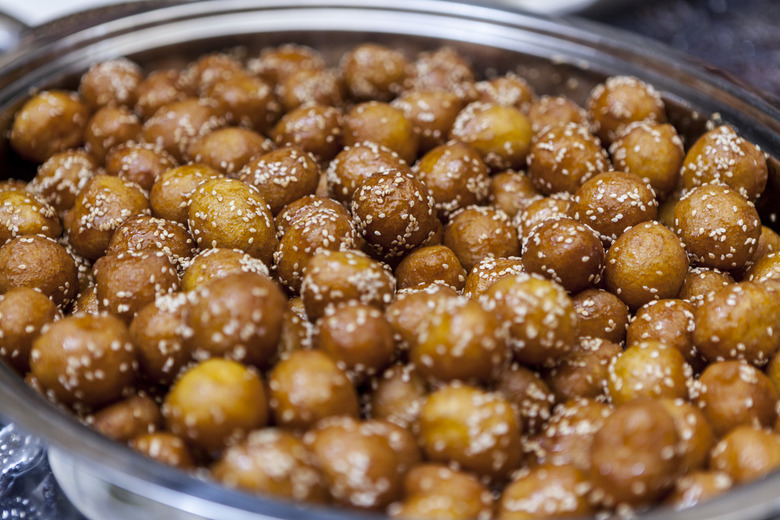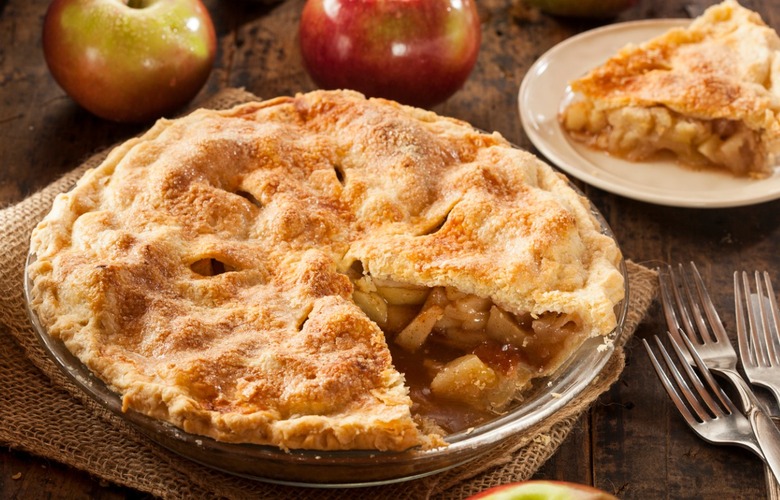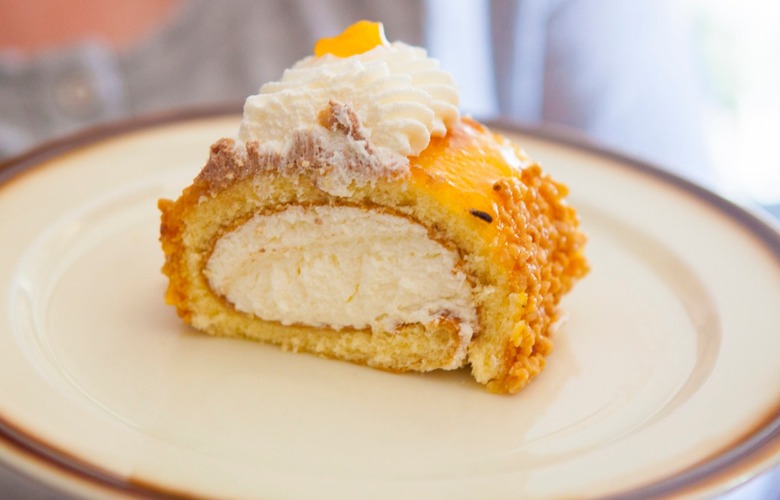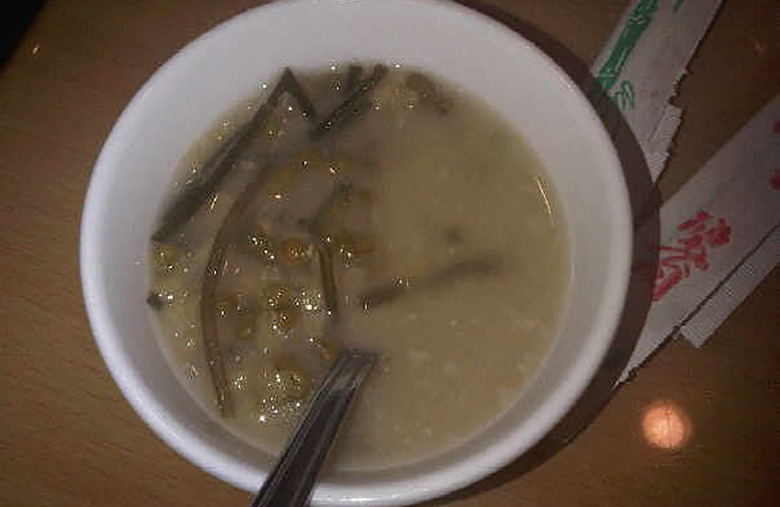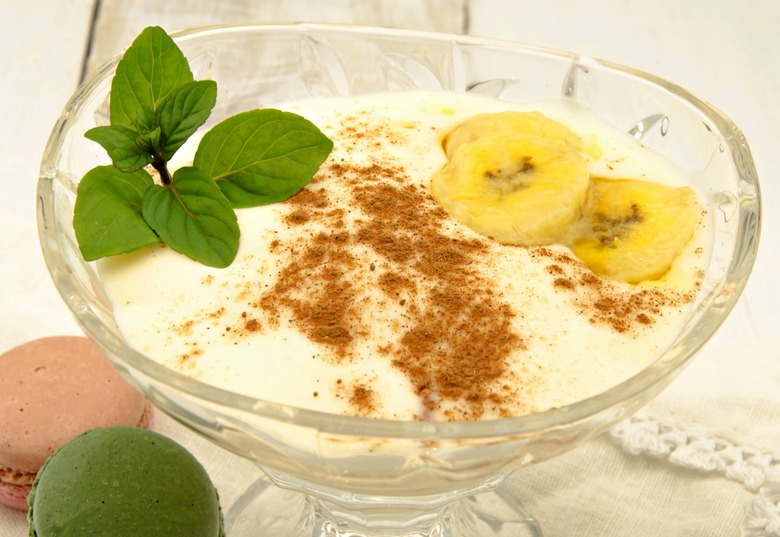Around The World In 80 Desserts Gallery
This Latin American treat is a popular dessert in Argentina. It's simply dulce de leche filling sandwiched between two shortbread cookies.
The word alfajor comes from the Arabic word for "honeycomb." The cookies are often served with coffee and traditionally dipped in chocolate, though "snow alfajores" are dipped in powdered sugar and coconut.
Click here for 101 best restaurants in Latin America and the Caribbean.
Australia: Pavlova
Pavlova is a popular dessert in Australia and New Zealand of meringue crust topped with whipped cream and fresh fruit, such as kiwi and strawberries. Pavlova is named for Russian ballerina Anna Pavlova, who was known for her lithe and airy style of dancing, thought to be similar to the texture of the dessert.
There is an ongoing controversy over whether pavlova is native to New Zealand or Australia. Despite the Oxford English Dictionary stating in 2010 that the dish comes from New Zealand, pavlova is still enjoyed and its origin debated in both regions.
Click here to discover the target audience of a new red blend of Australian wine.
Austria: Sacher Torte
Created in 1832, when a chef's apprentice named Franz Sacher presented his sweet creation to Prince Metternich, the Sacher torte is a dense, bittersweet chocolate sponge cake with a layer of apricot jam filling.
In 1998, the Hotel Sacher Wien in Austria made a two-and-a-half-meter (eight-and-a-quarter-foot) tall Sacher torte that made it into the Guinness Book of World Records.
Bahamas: Guava Duff
Guava duff is a Bahamian dessert consisting of guava fruit folded within layers of dough. Guava is an indigenous fruit found growing throughout the islands. Ingredients include guavas, sugar, vanilla, and butter.
Click here for Nassau must-dos for your next Bahamas vacation.
Belgium: Belgian Waffles
Waffles are the signature dessert of Belgium, having originating from the Middle Ages when they were sold in the form of unleavened crisp cakes made of barley and oats baked in a wafer iron.
In Belgium, there are two types of waffles: the Brussels waffle and the Liége waffle. The Brussels waffle is what is universally known as the Belgian waffle and is served with chocolate, fruit, or whipped cream. The Liége version is baked from brioche bread dough and is chewier, sweeter, and richer than its counterpart. Popular Liége waffle flavors include plain, vanilla, and cinnamon.
Click here for 10 things you didn't know about Waffle House.
Brazil: Quindim
Quindim is a signature Brazilian dessert with a bright yellow color, glistening surface, and custardy consistency similar to that of flan. The recipe for quindim includes ingredients such as coconut, sugar, butter, and egg yolks, which give the dish its distinctive hue.
The origins of the dessert are said to be rooted in Portuguese cuisine, which often incorporates a substantial number of egg yolks in its recipes. In the seventeenth century, quindim was modified by slaves in the Bahia region of Brazil to include coconut, which is readily found locally.
Burma: Banana Shwe Gye Cake
Cambodia: Sankhya Lapov
Canada: Maple Taffy
Maple taffy is a sugary Canadian confection traditionally made from maple syrup and snow. Maple syrup is boiled to 234 degrees Fahrenheit and then poured onto fresh snow, where the cold temperature hardens the concoction into an edible treat that consumers often use wooden sticks or dinner forks to eat. The maple taffy is often served with coffee, tea, doughnuts, or even sour dill pickles.
For five weird Canadian foods you've never heard of, click here.
Chile: Sopaipillas
Chilean sopaipillas are crispy, deep-fried pastries often topped with honey or syrup. What makes sopaipillas different from scones is the recipe's use of zapallo squash, an ingredient that gives the dough a yellow color. Sweet sopaipillas are sometimes dipped in cinnamon and black beet sugar, though a salty version of the treat is also popular.
China: Tangyuan
Tangyuan are colorful, glutinous rice balls filled with black sesames, peanuts, and red bean pastes. Tangyuan are often served in a sweet broth of ginger and rock sugar. The chewy treats are served on the Winter Solstice and at other Chinese holidays.
Click here for the nine best places to celebrate the Chinese New Year around the world.
Costa Rica: Tres Leches
Tres leches is a moist cake (made with evaporated milk, sweetened condensed milk, and cream) that is topped with sugar, vanilla, and whipped cream.
Cuba: Dulce de Leche
Dulce de leche is a thick, tan-colored confection made of caramelized sugar and condensed milk that is eaten on its own or poured over ice cream, cakes, or cookies.
Czech Republic: Ovocne Knedliky
Ovocne knedliky are fruit dumplings, made in many homes in the Czech Republic. This dessert typically includes strawberries, plums, peaches, apricots, or cherries.
Denmark: Wienerbrød
Wienerbrød, known in America as the Danish, is the national pastry of Denmark. Wienerbrøds often have a fruit, cheese, nut, jam, cream, or custard filling. Wienerbrød is actually an Austrian word that means "Viennese bread," as it was a group of Austrian bakers who originally created the pastry in the 1800s.
Dominican Republic: Bizcocho Criolla
Bizcocho criolla is the Dominican Republic's national cake. An interpretation of pound cake that's covered in powdered sugar or meringue, bizcocho criolla is airy and moist, and it usually has a fruit filling.
Egypt: Basbousa
Basbousa is an Egyptian street food, a semi-sweet semolina cake typically topped with spoonfuls of lime curd, whipped cream, and berries.
England: Sticky Toffee Pudding
Hailing from the Lake District in northwest England — to which it was reportedly introduced by a couple of Canadian airmen — sticky toffee pudding is a rich, gooey, spongy cake smothered in sweet toffee sauce. The cake itself is made of dates, butter, sugar, eggs, cinnamon, and sometimes Ovaltine.
Ethiopia: Destaye
Destaye are thin pastry shells filled with raisins, pistachios, almonds, grated coconut, and cardamom. The name translates to mean "my happiness."
Fiji: Cassava Pudding
Finland: Kiisseli
Kiisseli, a popular dessert in Finland, is a thickened berry stew made with red berry juice, potato starch, sugar, and mixed berries. Popular kiisseli flavors include blueberry, prune, apricot, and strawberry.
France: Chocolate Soufflé With Grand Marnier
Chocolate soufflé is a decadent and time-honored dessert in France. It is in effect a lightly baked cake comprising egg yolks, beaten egg whites, sugar, and a gooey chocolate interior. The dessert has a reputation for being notoriously difficult to execute, as the dish has to be served immediately to prevent the soufflé from dropping and becoming dense.
In France, the soufflé is often infused with Grand Marnier, an orange liqueur that accents the richness of the chocolate with a citrusy flavor.
Click here for three chocolate desserts you can only have in Paris.
Germany: Apple Strudel
Apple strudel is a flaky pastry covered in caramelized or powdered sugar and filled with sliced apples, cinnamon, raisins, and roasted breadcrumbs. Apple strudel is served warm, often with whipped cream, vanilla sauce, or vanilla ice cream.
Learn how a Germany-based company uses virtual reality to study the perception of taste.
Greece: Galaktoboureko
Galaktoboureko is a Greek dessert whose name translates to "milk burek." Burek is a kind of pastry usually filled with meat or cheese, but a galaktoboureko is a custard-like pie with a phyllo dough pastry shell that is often served in square pieces and smothered in cinnamon, lemon, and sugar syrup.
Click here for how the Greek wine industry has responded to the Greek economic crisis.
Guatemala: Mole de Platanos
Mole de platanos are fried plantains covered in melted chocolate sauce and sesame seeds. It is popular in both Guatemala and El Salvador. Even though it's a dessert, the dish isn't too sweet.
Haiti: Pain Patate
Holland: Vlaai
Vlaai is a traditional Dutch pastry tart topped with fruit and whipped cream. It's often served on Easter or at weddings and birthdays. Vlaai has a spongy bottom and can come with myriad different toppings; one Dutch national bakery chain offers at least 50.
Hong Kong: Tong But Luck
"Tong but luck" are sweet and chewy glutinous rice balls, usually coated with sesame seeds or nuts, similar to the traditional Chinese dish tangyuan.
Hungary: Dobos Torte
Dobos torte is a seven-layer sponge cake flavored with lemon, topped with caramel sauce, and filled with chocolate and buttercream. The dessert's name comes from its creator, Josef Dobos, who invented the dessert in the 1800s in Budapest.
Iceland: Snuour
Snuour is the Icelandic version of the cinnamon roll, frosted with melted chocolate and other flavored glazes.
For five reasons you should put Reykjavik on your bucket list, click here.
India: Galub Jamun
Gulab jamun are deep-fried dough balls covered in a sugary syrup flavored with cardamom seeds, rosewater, or saffron. The name of the dish is a combination of the Persian word gulab, which means "rose" and refers to the rosewater-scented syrup used in the dish, and the Hindi word jamun, which is a South Asian fruit sometimes called the Java plum.
The dessert is also enjoyed in Pakistan, Nepal, and Bangladesh. The dish is based on an Arabic dessert called luqmat al-qadi and is often served at weddings and major celebrations like the Indian Diwali festival and Muslim Eid-al-Fitr and Eid al-Adha festivals.
Indonesia: Kolak
Kolak is a soupy Indonesian dessert made of fruit, sugar, and fresh coconut milk. Fruits typically used in kolak include pumpkin, sweet potato, bananas, jackfruit, and cassava.
Iran: Faloodeh
Faloodeh is a Persian frozen dessert, dating back to 400 B.C., that is a slushy combination of rosewater, lime juice, sugar, and noodles. Garnishes for faloodeh include pistachios, mint, and sour cherry syrup.
Ireland: Guinness Cake
Guinness cake is an Irish dessert that infuses Guinness stout into a pastry concoction of flour, cinnamon, ginger, raisins, lemon, and eggs. This sweet dessert is an Irish culinary tradition, served on Christmas and St. Patrick's Day.
For 10 traditional Irish dishes you should know, click here.
Israel: Kanafeh
Kanafeh is a sweet phyllo dough or semolina pastry stuffed with goat cheese and drenched in syrup. This dessert is popular in many Middle Eastern countries.
Italy: Gelato
Gelato differs from ice cream in its flavor and texture. The frozen dessert is made with milk as opposed to cream, which gives the dish a lower fat content. It also has less air whipped into it than ice cream, making it denser and often more intense in flavor.
Gelato is an Italian term that means "frozen." The history of the dessert is rooted in sixteenth-century Italy, when, according to many accounts, a Florentine named Bernardo Buontalenti presented his gelato creation to the royal court of Caterina de' Medici.
Jamaica: Coconut Toto
Coconut toto is a delicious, easy-to-make Jamaican coconut cake spiced with cinnamon, nutmeg, and vanilla.
Japan: Mochi Ice Cream
Mochi ice cream is a signature Japanese treat that infuses chewy mochi (small, pastel-colored, glutinous rice cakes dusted with powdered sugar) with sweet, fruit-flavored ice cream. One variation is mochi ice cream balls, which are mocha balls covered in ice cream.
Jordan: Hareeseh
The name for this dessert varies from basboosa to namoora to harissa depending on who you speak to, but it is the same sweet treat. Hareeseh is sold as a street food in Jordan and many old Middle Eastern cities. It is basically semolina cake infused with rosewater syrup, and usually topped with toasted almonds or pistachios.
Kenya: Mandazi
Mandazi are pastries commonly found throughout East Africa that are typically served with tea and coffee. Though less sweet than typical Western doughnuts, mandazi are often infused with spices and topped with powdered sugar.
Lebanon: Sfouf
Sfouf is a sweet, yellow, Lebanese almond cake made with semolina dough. The dessert's yellow color comes from turmeric.
Luxembourg: Verwurrelt Gedanken
Verwurrelt gedanken is a small, deep-fried pastry made with flour, butter, eggs, milk, and sugar dough that is frosted with icing sugar. The dessert is served most frequently during Fuesent, the carnival season in February.
Macau: Pasteis de Nata
Pasteis de nata are small, egg tarts. They have a custard-like consistency and are often served with powdered sugar or cinnamon sprinkled on top.
Malaysia: Kueh Bangkit
Kueh bangkit are coconut cookies that are a staple at Malaysian holidays, particularly New Year's celebrations.
These floral-shaped cookies are crumbly on the outside and airy on the inside, and they melt in the mouth. The traditional recipe calls for tapioca flour, pandan, coconut milk, sugar, and eggs yolks.
Click here for 14 essential Malaysian dishes you need to try.
Maldives: Dhonkeyo Kajuru
Dhonkeyo kajuru, a fried banana cake, is a popular dessert in the Maldives. The dish is made using ripe bananas, sugar, flour, dried coconut, and rose water, and then deep-fried into bite-sized balls.
Mexico: Arroz con Leche
Arroz con leche is a sweetened rice pudding with a thick and creamy consistency, often infused with cinnamon and raisins, popular in Mexico and many Latin American countries.
Mongolia: Boortsog
Boortsog is a Mongolian deep-fried butter cookie. These sweet treats are sometimes decorated in different dough patterns and are usually dipped in honey, butter, or tea.
Morocco: Kaab el Ghazal
Translated from Arabic, the dessert name kaab el ghazal means "gazelle horns." A popular Moroccan treat, kaab el ghazal are crescent-shaped cookies made with almond paste, orange flower water, and cinnamon, and topped with powdered sugar.
Nepal: Gajar Ka Halwa
Gajar ka halwa is Nepal's version of carrot pudding. The dessert is made with carrots, milk, cardamom, raisins, almonds, pistachios, and sugar.
Nepal has a hallucinogenic honey that costs hundreds of dollars per pound.
New Zealand: Hokey-Pokey
Hokey-Pokey is a popular ice cream flavor in New Zealand with vanilla flavoring and pieces of honeycomb toffee and chocolate (only plain vanilla is said to be more popular).
Hokey-pokey's name comes from the nineteenth century, when the term (possibly derived from hocus-pocus) originally meant deception or cheating and came to refer to a kind of cheap ice cream sold by street vendors.
Nicaragua: Turrón
Turrón is a Spanish nougat that is commonly made with honey, toasted almonds, egg whites, and sugar. Turrón can be made as a soft dessert if the almond is turned into a paste, or it can be made into a hard block of nougat. Other nuts such as hazelnuts or pistachios can also be used to create the dessert.
Niger: Caakiri
Caakiri, similar to rice pudding, is popular in West African countries. Ingredients include couscous, cream, vanilla yogurt, raisins, butter, nutmeg, and sometimes a pineapple paste. Usually, the dish is served chilled.
Get a flavorful taste of West Africa at this New York restaurant.
Norway: Fattigman
Fattigman, also known as "poor man's cookies," are fried cookies made of eggs, sugar, butter, heavy cream, cardamom, sugar, and sometimes a sprinkle of cognac or other brandy. Fattigman are often cut into diamond and bow shapes, and covered with powdered sugar. They have become a Norwegian holiday specialty.
Oman: Sako
Sako is a traditional Omani dessert consisting of a sweet and caramelized tapioca pudding. Ingredients in sako include saffron, sugar, rosewater, ginger, cinnamon, and cardamom. Nuts, such as pistachios or walnuts, may also be chopped into the pudding.
Panama: Pesada de Nance
Pesada de nance is a common dessert in Latin American countries, also known as mazamorra. In Panama, the dessert is called pesada, which means "heavy" in Spanish, and nance is a fruit found in Central and South America. The dessert is a thick pudding made with blended and sieved nance fruit, sugar, and cornstarch.
Papau New Guinea: Saksak
These sweet sago dumplings, called saksak, are common throughout many parts of Papua New Guinea. They combine sago (a spongy tropical starch that comes from palm trees), bananas, coconut milk, and banana leaves.
Paraguay: Passion Fruit Mousse
Passion fruits are native to the subtropical region of Paraguay. Passion fruit mousse is made with milk, heavy cream, and strained passion fruit pulp, which are mixed with gelatin, egg whites, and sugar.
Philippines: Bibingka
Similar in appearance to a Western pancake, bibingka is a sweet rice cake covered in butter and sugar and served with grated coconut. Bibingka is served most often in the Christmas season, when locals buy the treat from street vendors after church.
Poland: Babka
Babka is a Polish dish that resembles a brioche-like cake with a spongy texture. The dessert's flavor is sweet and the cake is usually filled with fruits like raisins. Babka is a Polish word that means "grandmother"; the pastry was given this name because of the dish's cylindrical and corrugated shape, thought to suggest the pleats of an older woman's skirt.
To find out which Warsaw restaurant was awarded Poland's second Michelin star, click here.
Qatar: Esh Asaraya
The Qatari dessert of esh asaraya is a type of cheesecake made with bread and topped with cream. Esh asaraya translates to "bread of the harem."
Romania: Kürtőskalács
Originating in Transylvania, in Hungarian-speaking Romania, kürtőskalács is a sticky, twisted pastry topped with sugar, cinnamon, walnuts, chocolate, or coconut. The sweet treat is also called a "chimney cake," because of the large amount of steam that rises from the pastry when removed from the oven.
For 10 Transylvanian foods you've probably never heard of, click here.
Russia: Syrniki
Syrniki is a traditional Russian treat eaten at breakfast and for dessert that is made of golden brown, cottage-cheese-infused dough and topped with fruit. Syrniki are sometimes served with a side of sour cream.
Click here for the strange burger that's trending in Russian restaurants.
Seychelles: Ladob
Ladob is a Seychelles staple that can be eaten as a savory or sweet dish. Sweet ladob is made with sweet potatoes, ripe plantains, coconut milk, nutmeg, sugar, and vanilla. In the savory version, the sugar and vanilla are swapped out for salt, and salted fish is added.
Singapore: Bubur Cha-Cha
This Southeast Asian treat is a sweet coconut milk soup loaded with sweet potatoes, taro, and black-eyed peas. The sweet potatoes are often dyed with yellow, orange, and purple.
Click here to discover Singapore, one of the world's great food cities.
South Africa: Milk Tart
Similar to a buttermilk pie, the South African milk tart is a pie composed of a flaky pie crust and a white, custard-like filling. The pie is lightly seasoned and dusted with cinnamon, and it's often served at tea time.
South Korea: Tteok
Tteok are colorful Korean rice cakes made with glutinous rice flour. Tteok can be boiled, steamed, or pan-fried.
To find out about South Korea's controversial dog meat market, click here.
Spain: Flan
Syria: Ma'amoul
Tahiti: Po'e
Po'e is a Tahitian fruit pudding comprising bananas, brown sugar, vanilla, and coconut cream. Other fruits that can be used in the dish include kiwi, pineapple, papaya, and mangos.
Taiwan: Cua Bing
Cua bing is a shaved ice concoction common in Asia, it originally from Taiwan. The finely shaved ice, which resembles a mound of snow, is drizzled with condensed milk and topped with caramelized sugar and fresh fruit like mangos and strawberries or with red beans.
Thailand: Mango Sticky Rice
Popular during Thai New Year's celebrations but eaten year-round, Thai mango sticky rice is a combination of sweet sticky rice, fresh mango slices, and coconut sauce. Sometimes the notoriously pungent durian is used in place of mango.
Tibet: Sikarni
Trinidad and Tobago: Paw Paw Balls
Paw paw balls, a candy commonly enjoyed in Trinidad and Tobago, are grated green papaya (paw paw) rolled into balls and coated in a caramelized mixture of lime juice and sugar.
Turkey: Baklava
Baklava is a famous Turkish pastry consisting of fruit, nuts, and sometimes rice sandwiched between thinly rolled layers of syrupy phyllo dough.
Baklava was inspired by an ancient Assyrian dish of dried fruit and pastry and is often served with Turkish coffee. Popular flavors of baklava include pistachio, walnut, almond, rosewater, lemon, cinnamon, and nutmeg.
Ukraine: Zhele
Zhele is a gelatinous dessert similar to Jell-O, composed of fruit juice and sugar. Fruits used in zhele include cherries and pears, though jellied chocolate and milk are sometimes added as well.
United Arab Emirates: Luqaimat
United States: Apple Pie
Apple pie is heralded as the quintessential American dessert, serving as a culinary symbol of the nation's prosperity and pride in the nineteenth and twentieth centuries.
Apple pie consists of a pastry pie crust and an apple filling often seasoned with nutmeg or cinnamon. The pie takes about an hour in the oven to bake.
Interestingly, apple-pie-making does not originate in the United States; rather it was a concept brought over by the Pilgrims from England, where the pies were made with unsweetened apples covered by an inedible shell. Eventually, the recipe developed into the well-known dessert that is enjoyed today.
Click here for 11 apple pie recipes that are better than mom's.
Venezuela: Brazo de Gitano
Brazo de gitano is the Venezuelan version of a Swiss roll (a sponge cake filled with cream), but other variations are filled with strawberry and blackberry jam, coffee cream, or chocolate. Brazo de gitano is often covered with icing, chocolate, meringue, cream, or burnt crema catalana, a custardy topping similar to what comprises crème brûlée.
Vietnam: Che Dau Xanh
Che dau xanh is a Vietnamese sweet mung bean soup served most frequently on special occasions like New Year's or memorials for the deceased. Che dau xanh can be served hot, cold, or over ice, and can be topped with tapioca, jellies, glutinous rice balls, and fruit.
Zanzibar: N'dizi No Kastad
N'dizi no kastad is a banana custard made with vanilla pudding. This Zanzibar dessert is spiced with cinnamon, cloves, nutmeg, sugar and peanuts, and it is typically served in a Champagne or wine glass.

